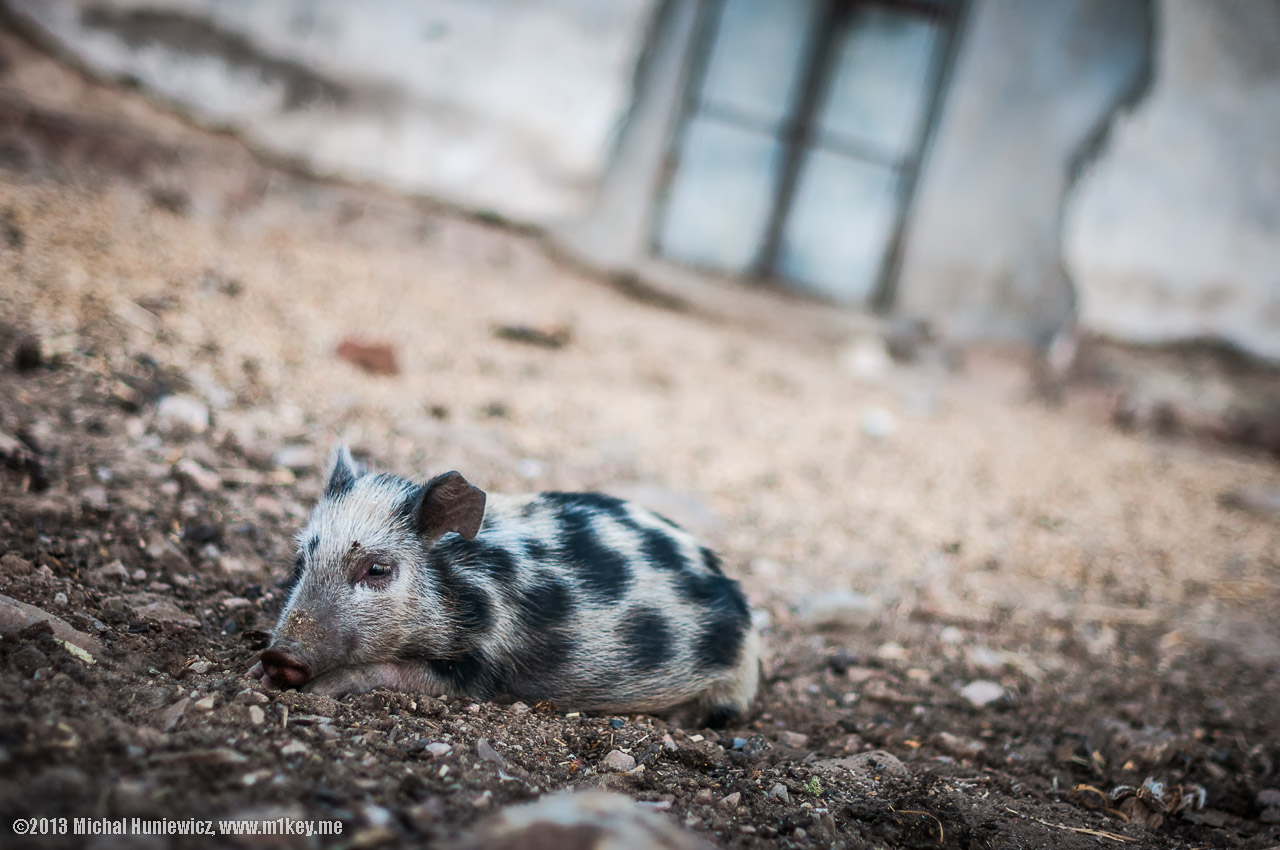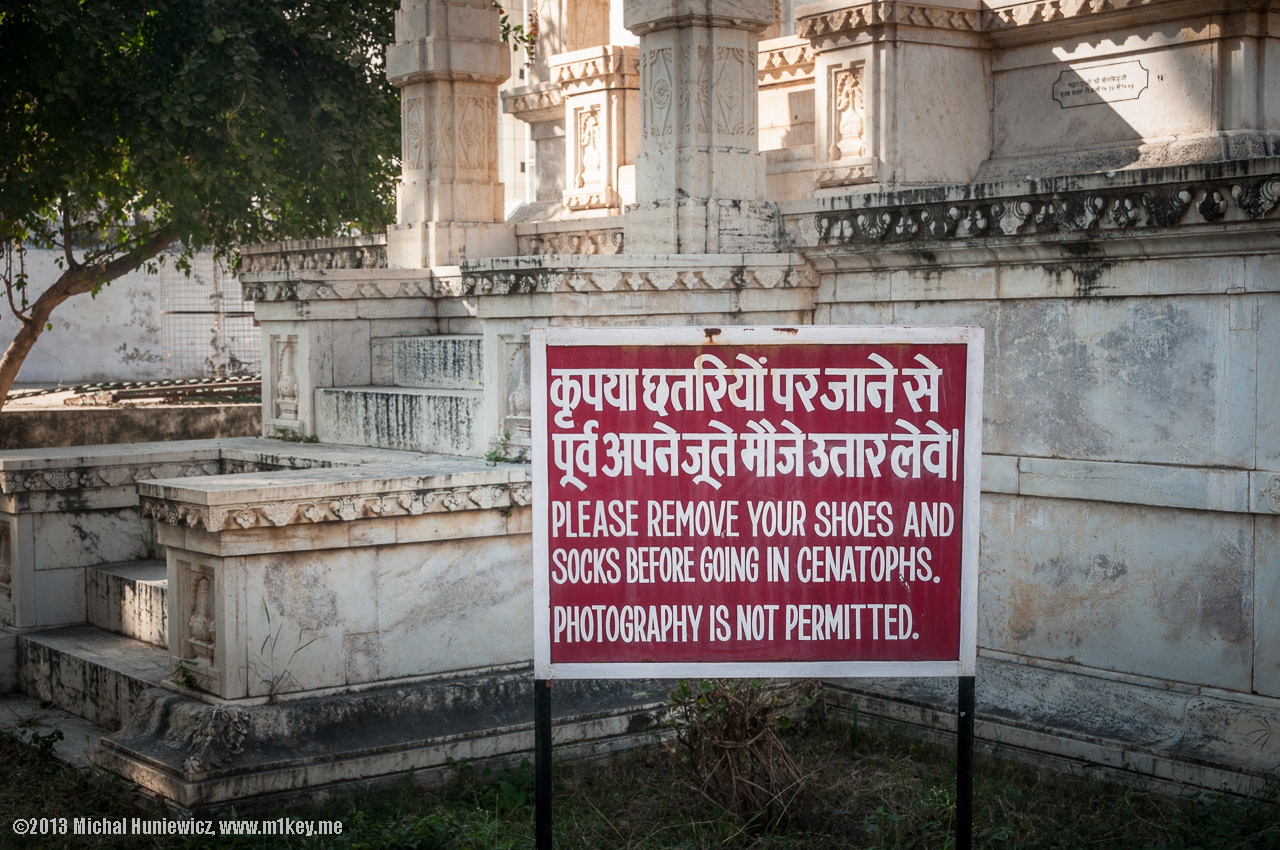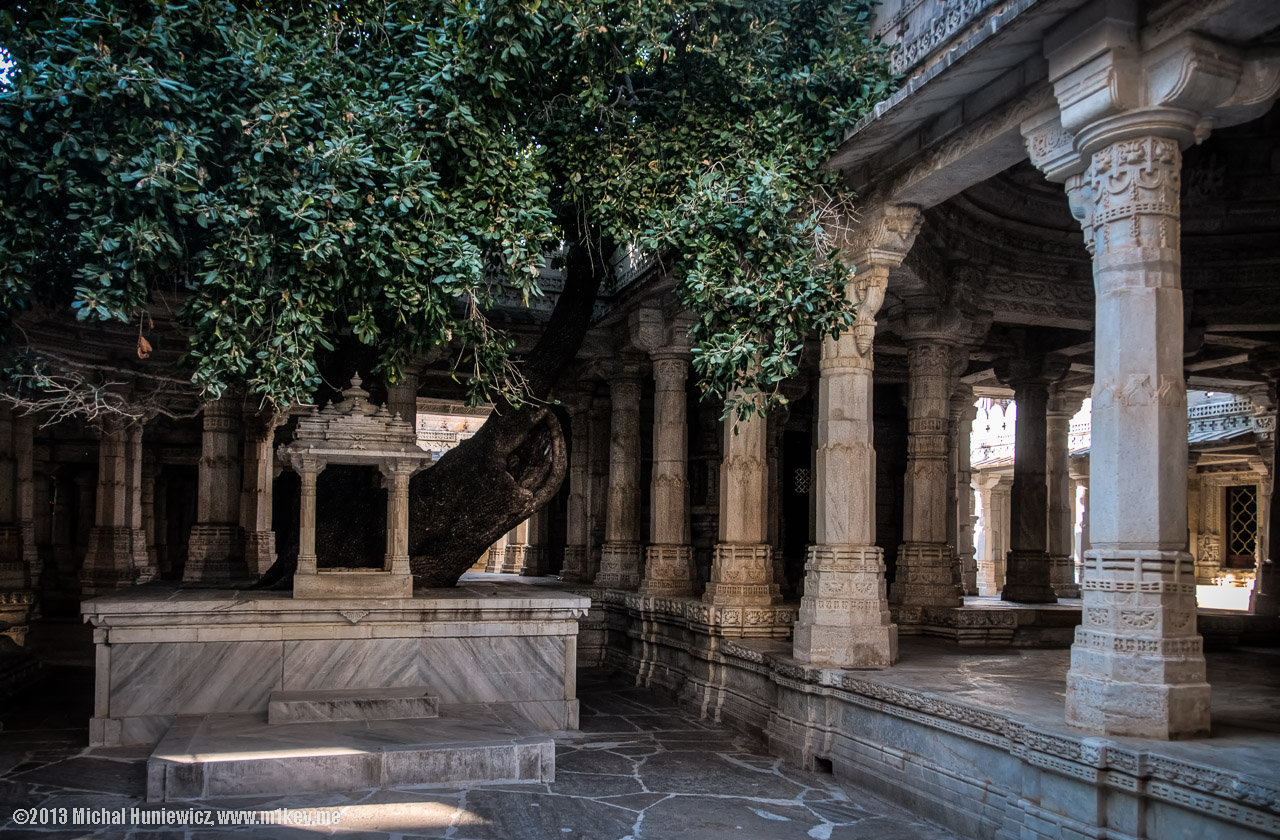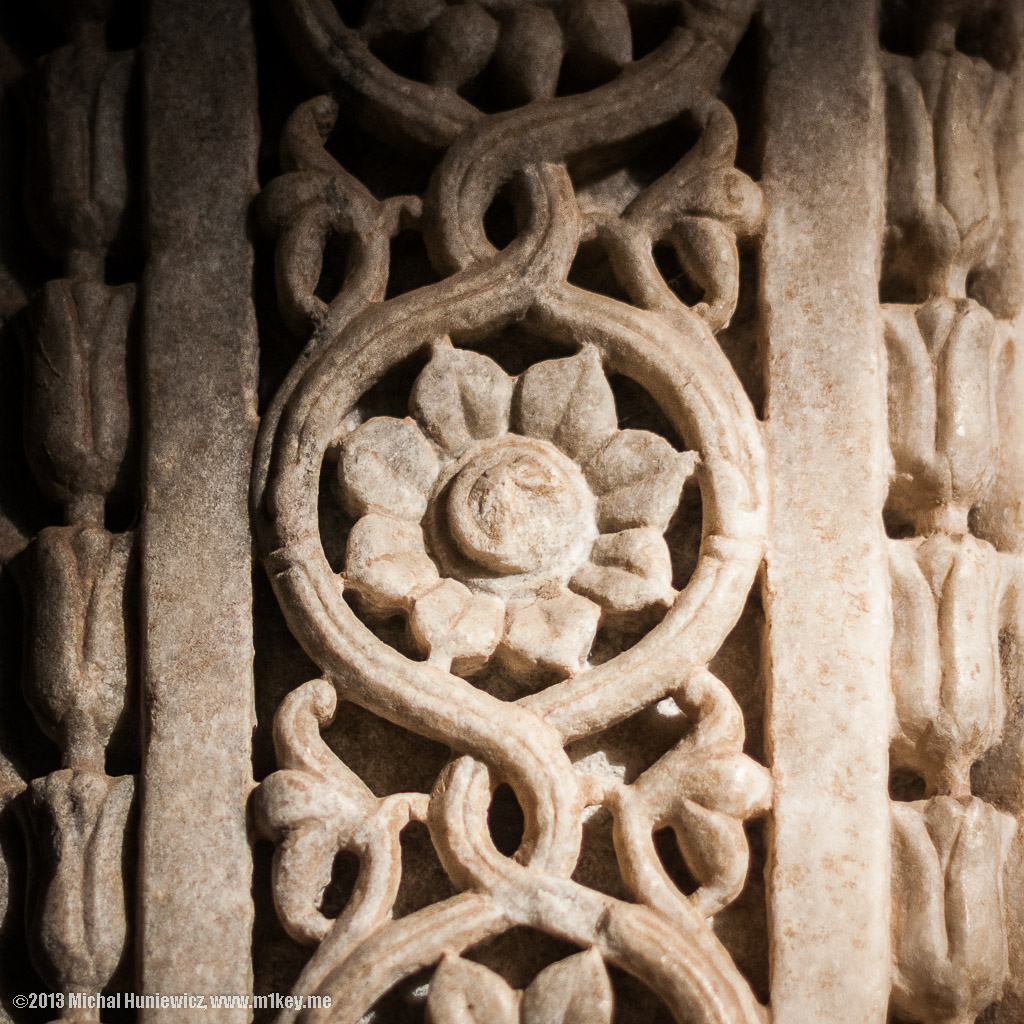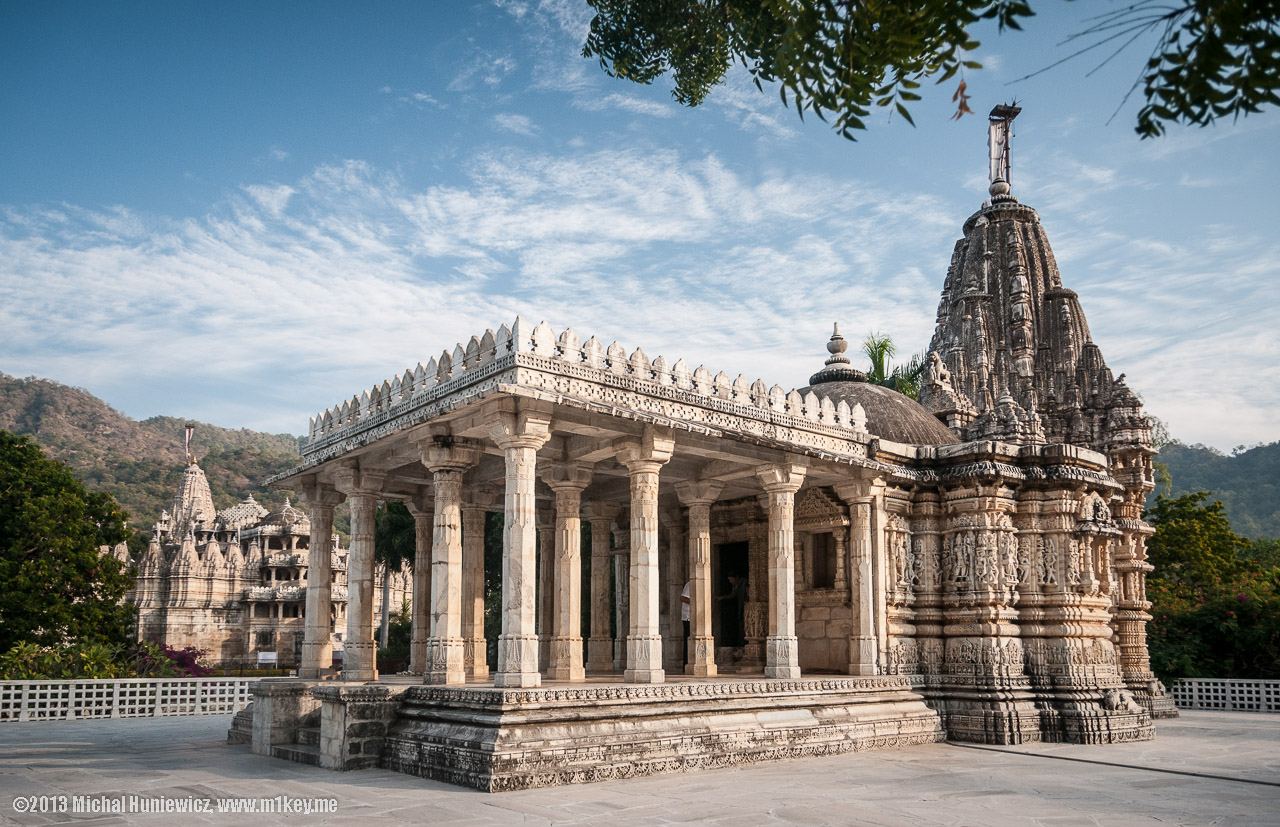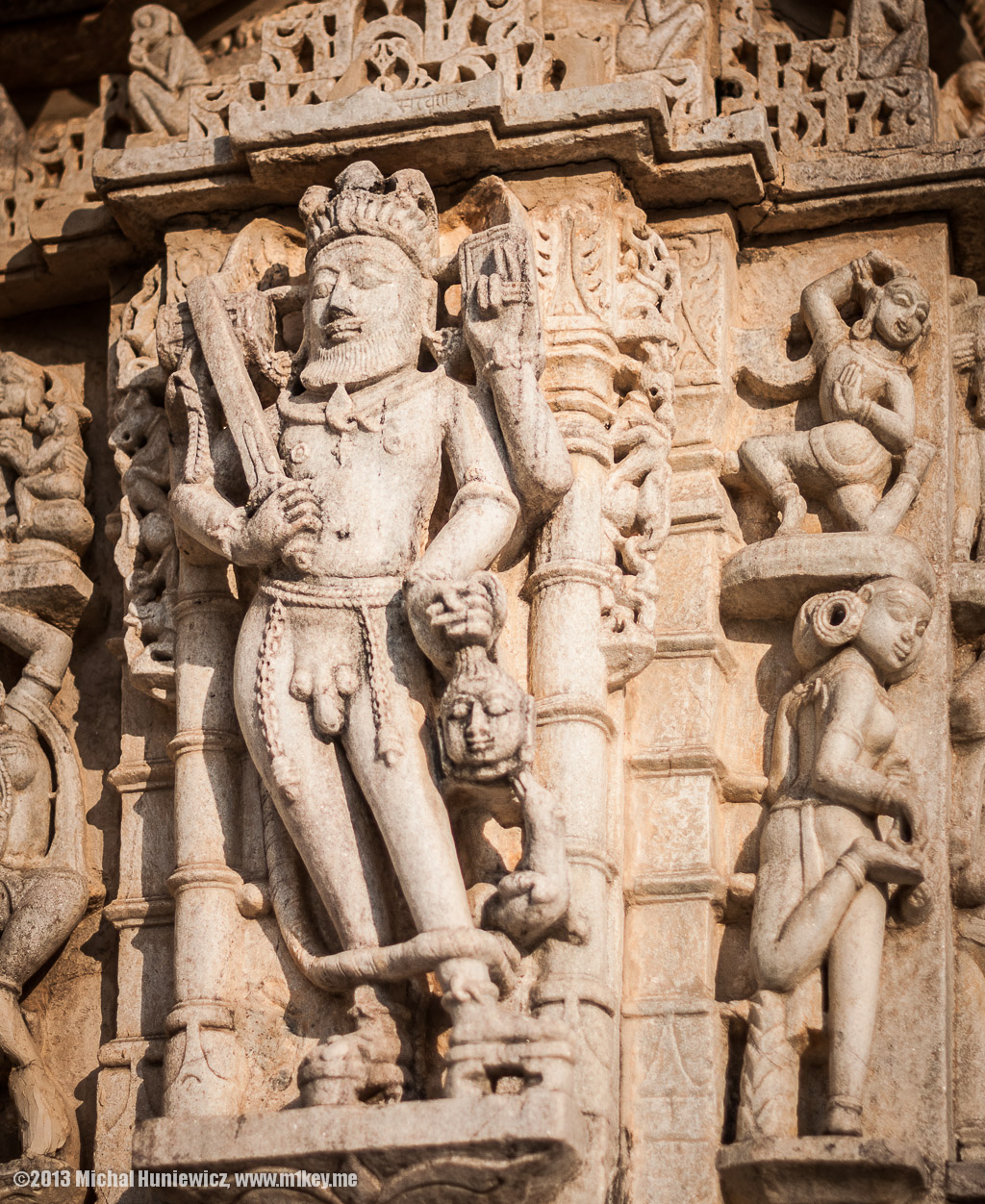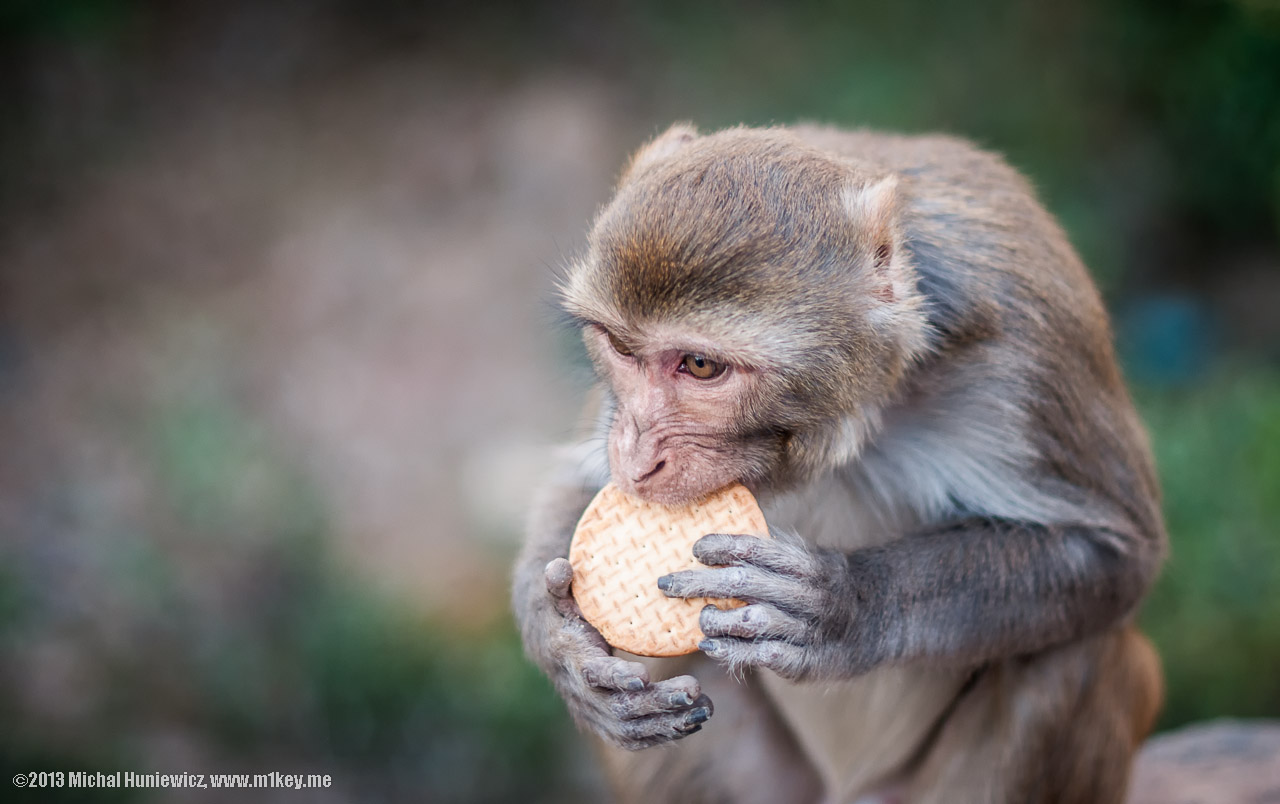Indian Temples Photography - M1key - Michal Huniewicz

OK, this time some shots of Indian temples, and a short introduction to the religion of Jainism!
Nice Indian song:
Sources: 1,
2,
3,
4,
5,
6,
7,
8,
9,
10,
11,
12,
13,
14,
15,
16,
17,
18,
19,
20.
Uploaded on: 2013-05-19.
Have you bribed the monkeys?
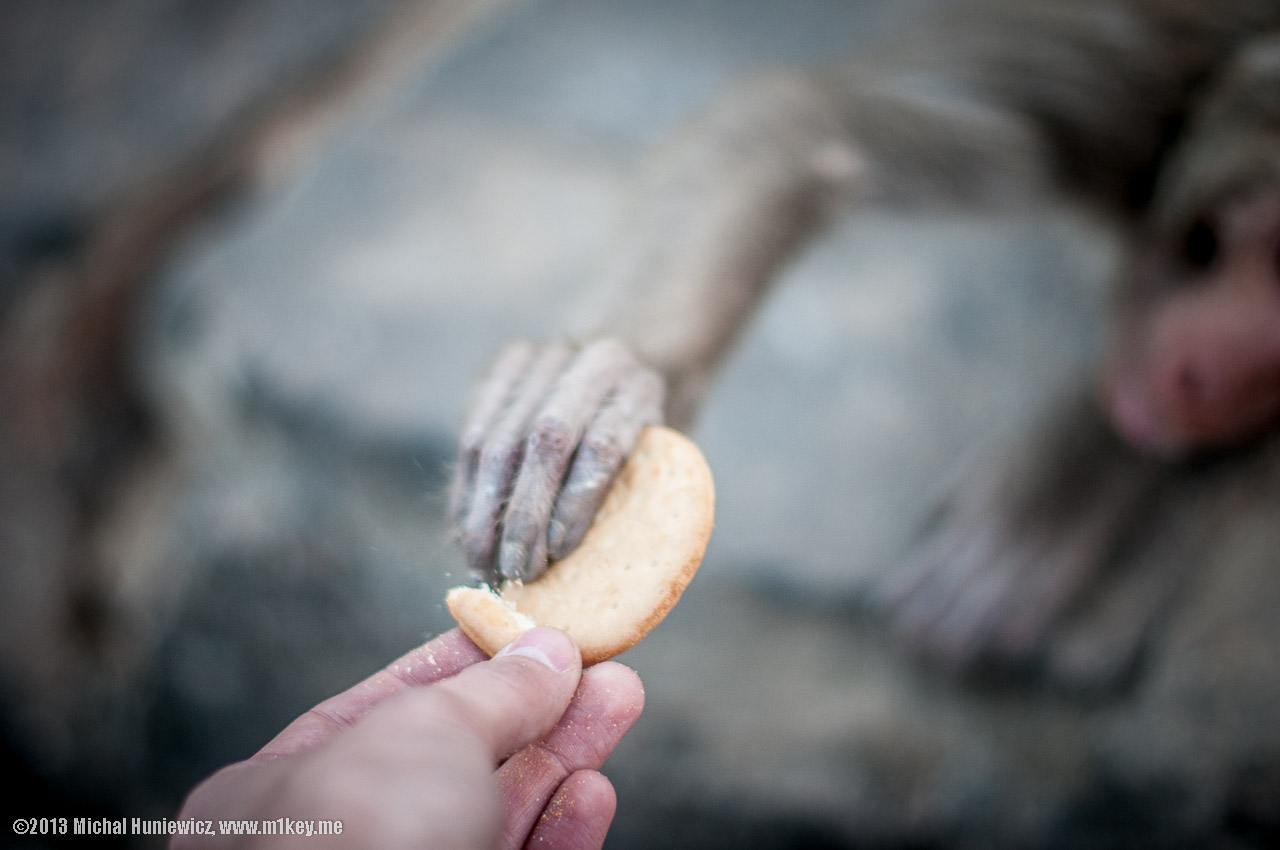
Before we continue, you must bribe the monkeys with biscuits - so that they don't harass us.
Done?
Done?
ISO 200, 50mm, f/1.4, 1/400s.
To the Monkey Temple
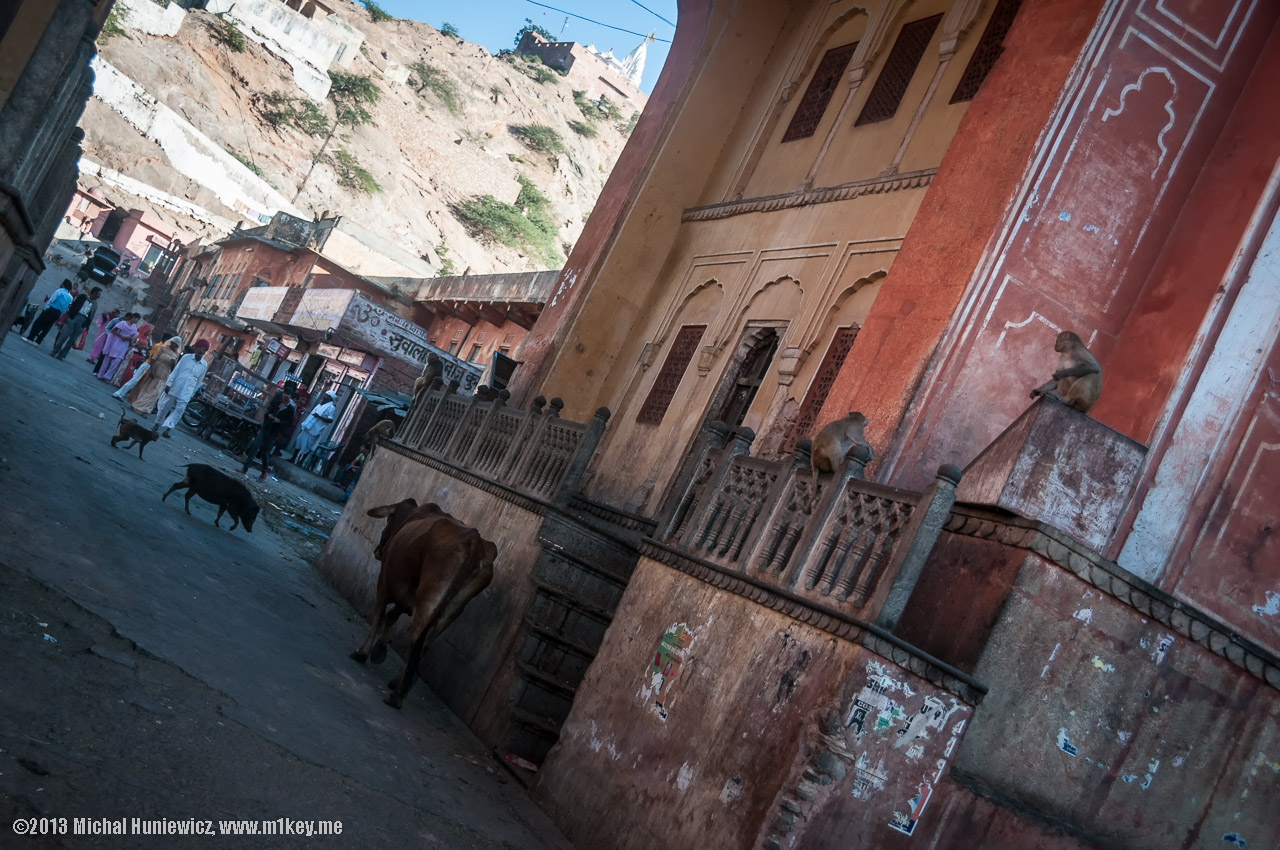
This is in Jaipur, on the path to the Monkey Temple (where they actually tell you to bribe the monkeys with biscuits).
ISO 200, 28mm, f/4.0, 1/250s.
Buffalo
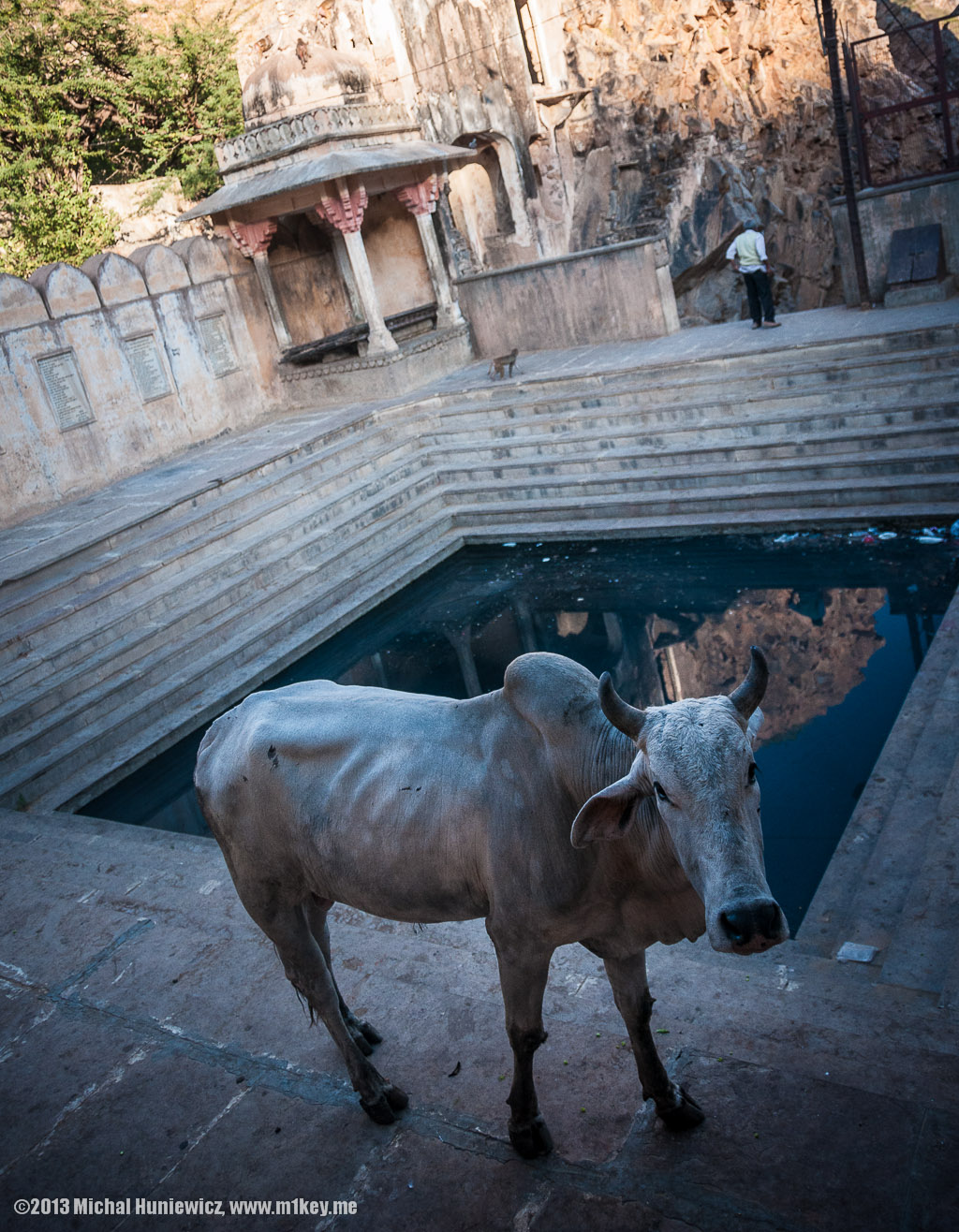
Here I was forced to pay a holy man for entering. He didn't have change, so he suggested the reminder be a donation,
which I refused, to his much exaggerated annoyance. On my way back, he silently gave me my change back, which caused an Indian man
to exclaim: "Holy man paying you! Who are you?!"
In the picture, a curious buffalo.
In the picture, a curious buffalo.
ISO 200, 18mm, f/3.5, 1/160s.
The Monkey Temple
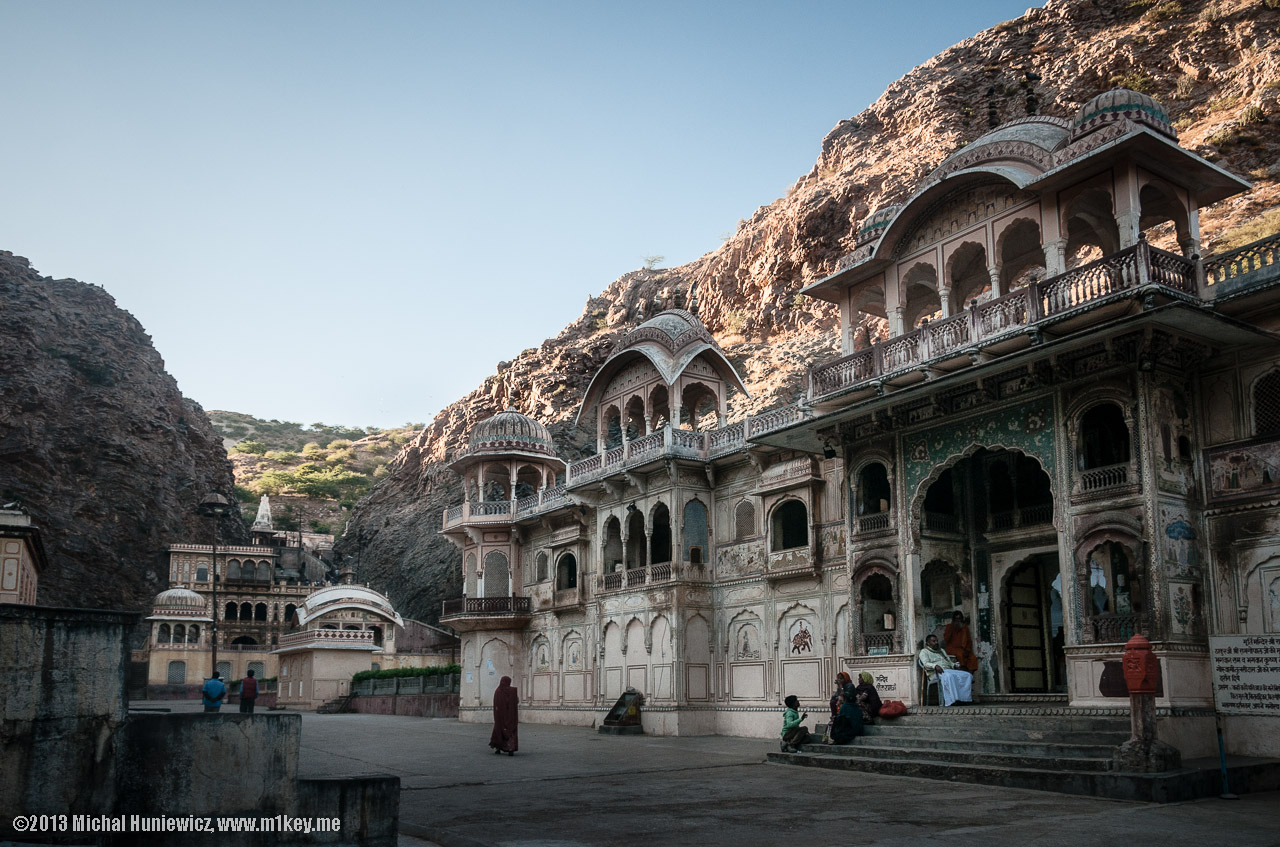
And this is the Monkey Temple itself. It is actually called Galtaji,
and is from the 16th century. [2] You can walk there from Jaipur, across those hills in the background,
like I did.
It didn't spiritually overwhelm, but at least it wasn't too crowded.
It didn't spiritually overwhelm, but at least it wasn't too crowded.
ISO 200, 18mm, f/5.0, 1/160s.
White-throated kingfisher
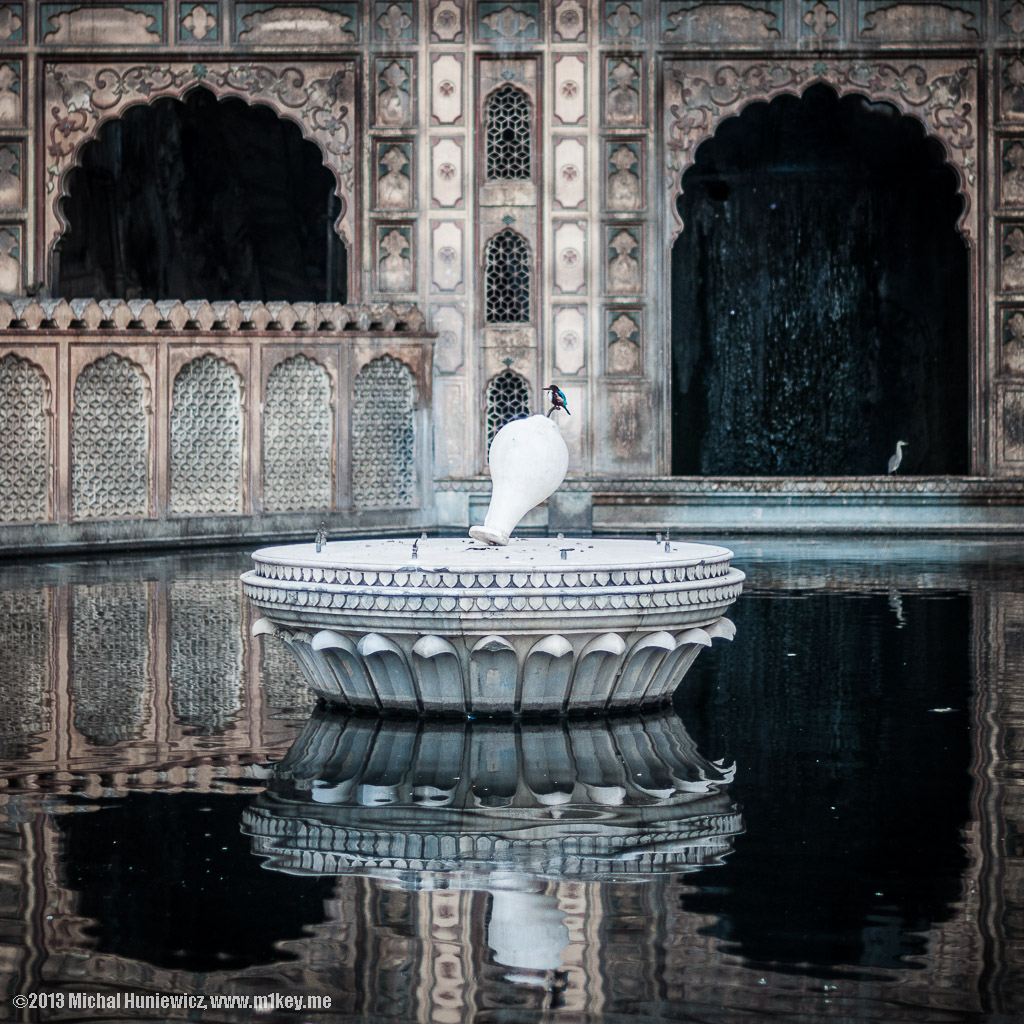
This, apparently, is a white-coated kingfisher [1], a pretty cool-looking bird.
ISO 200, 50mm, f/1.6, 1/640s.
Monkeys
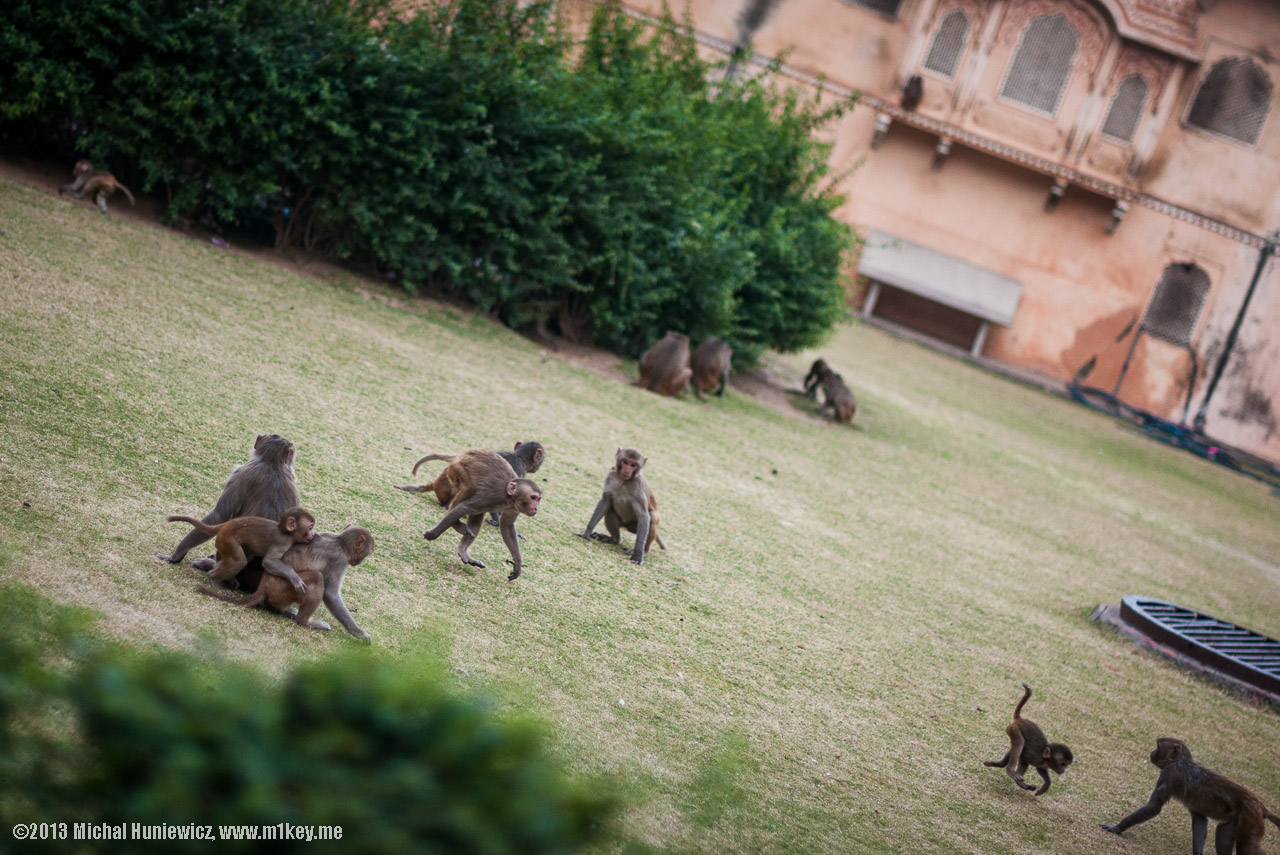
These, on the other hand, are rhesus macaques. In Morocco, I saw Barbary macaques.
ISO 200, 50mm, f/1.4, 1/1600s.
Behind the scenes
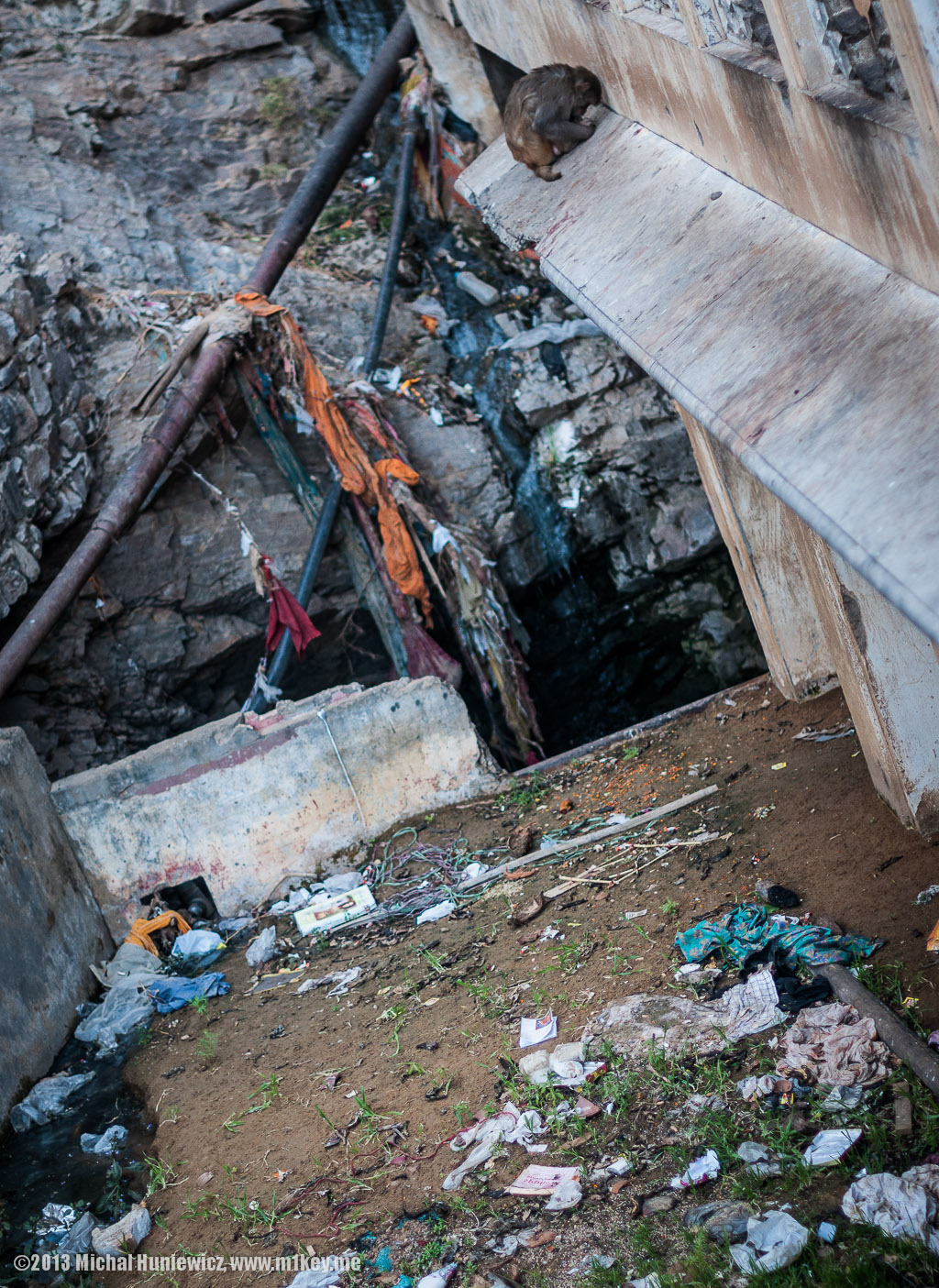
Just behind the temple: lots of rubbish and a sick-looking monkey.
ISO 200, 50mm, f/1.6, 1/500s.
In Varanasi
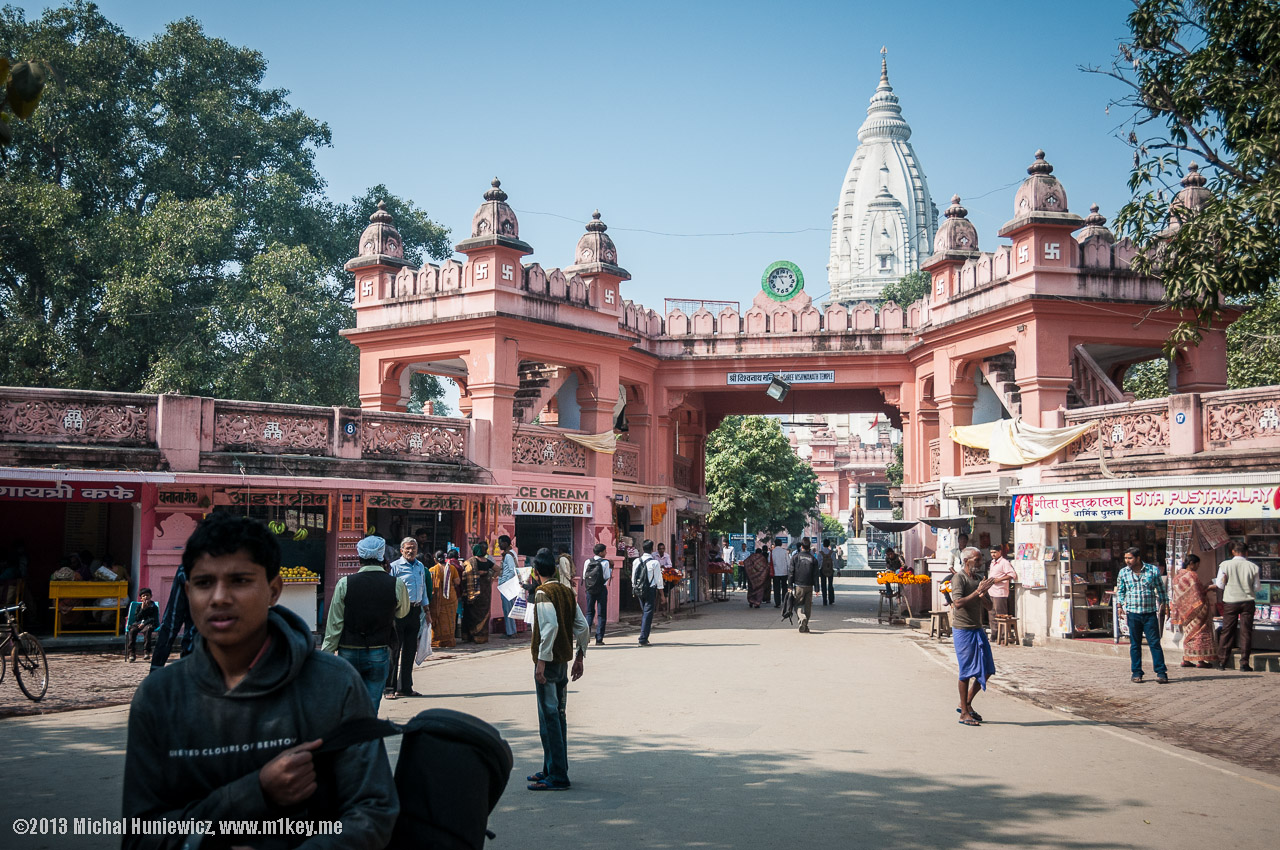
This is the Birla Mandir temple, which I have already showed you in my Highlights from India gallery.
ISO 200, 24mm, f/3.8, 1/2000s.
Ganesha
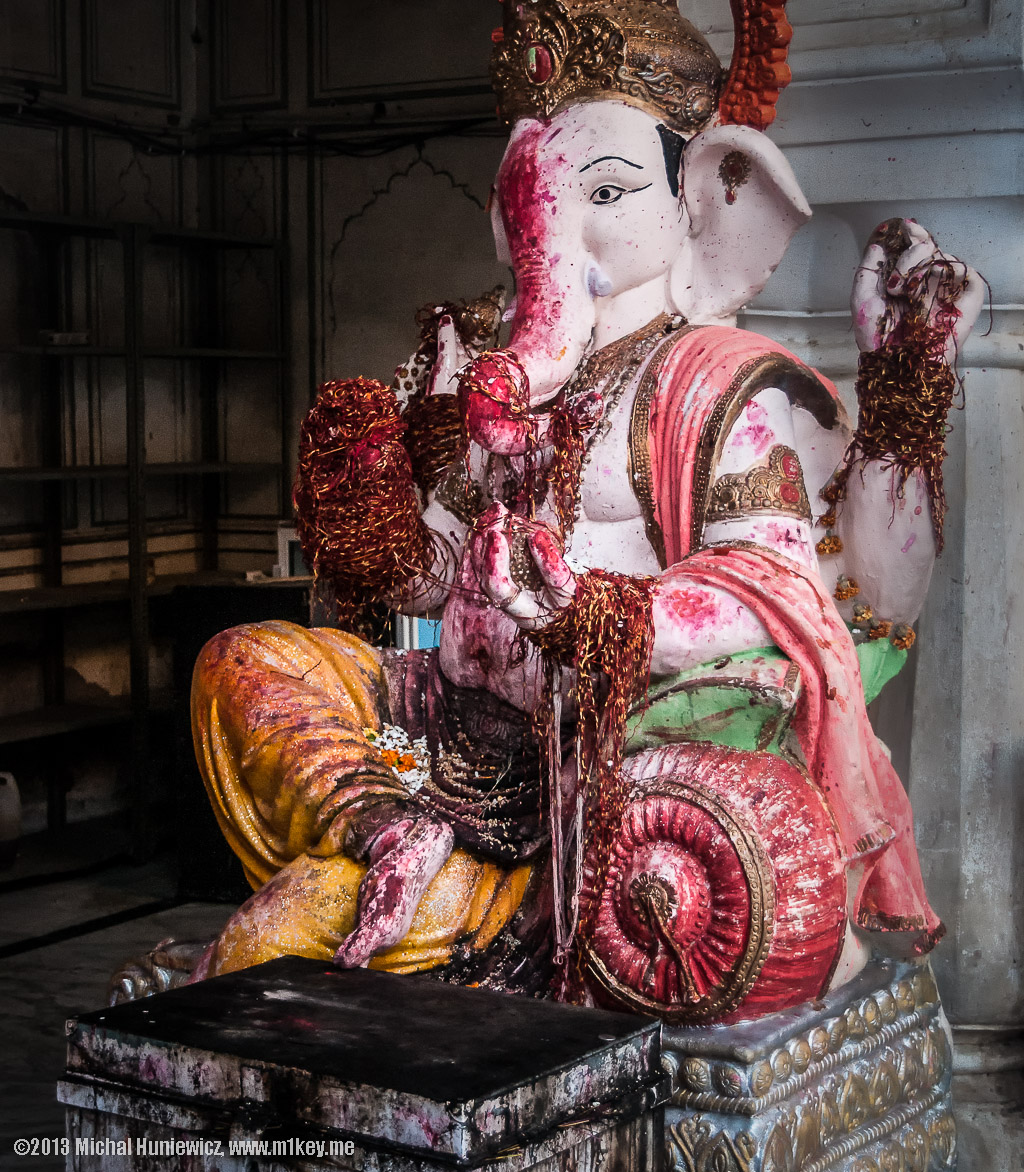
Ganesha, the Remover of Obstacles, one of the best-known deities in the Hindu pantheon. [6]
ISO 1250, 36mm, f/4.2, 1/125s.
Piggy
Jaipur
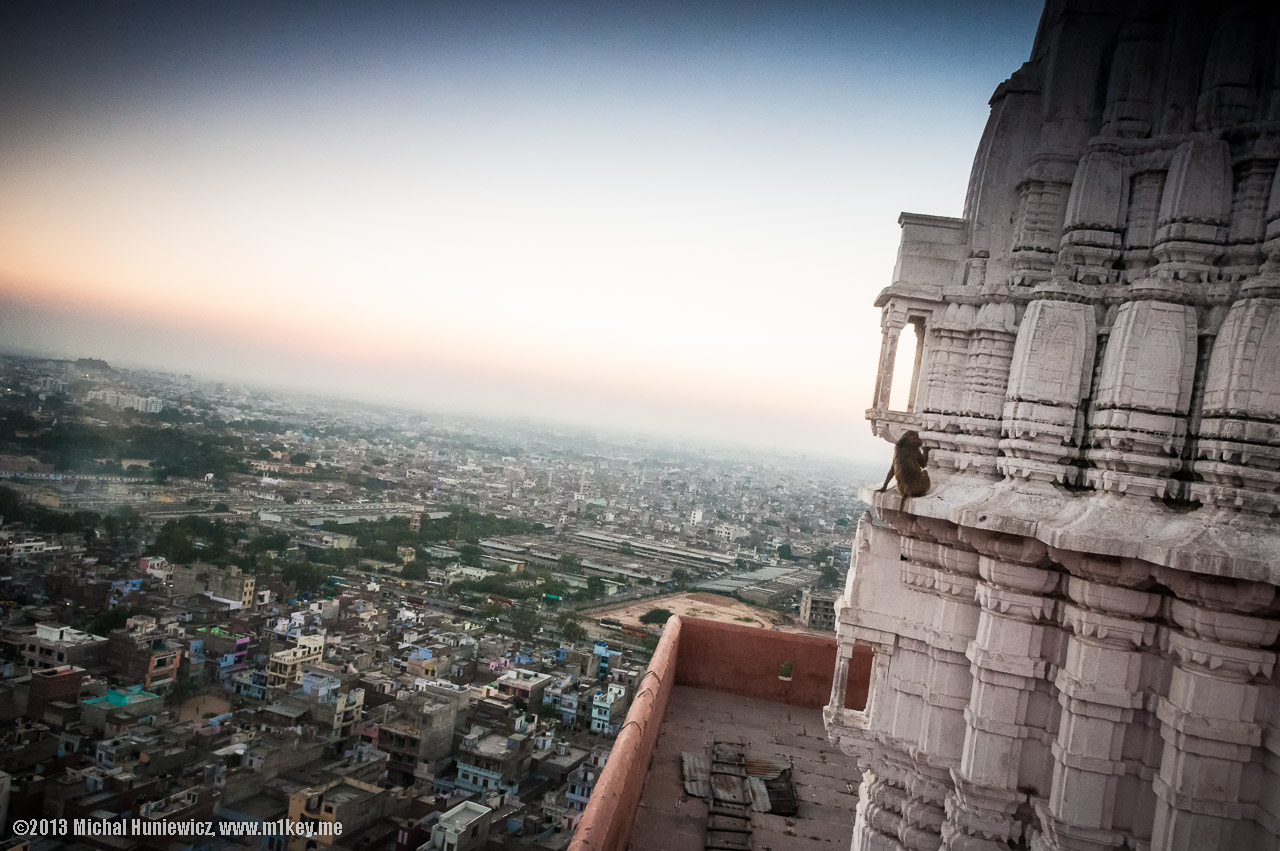
From a temple in Jaipur, towering over the city. I was yelled at for walking around that area (nearby, but not exactly the one pictured here),
as it was considered sacred.
ISO 1600, 18mm, f/13.0, 1/60s.
The Rat Temple
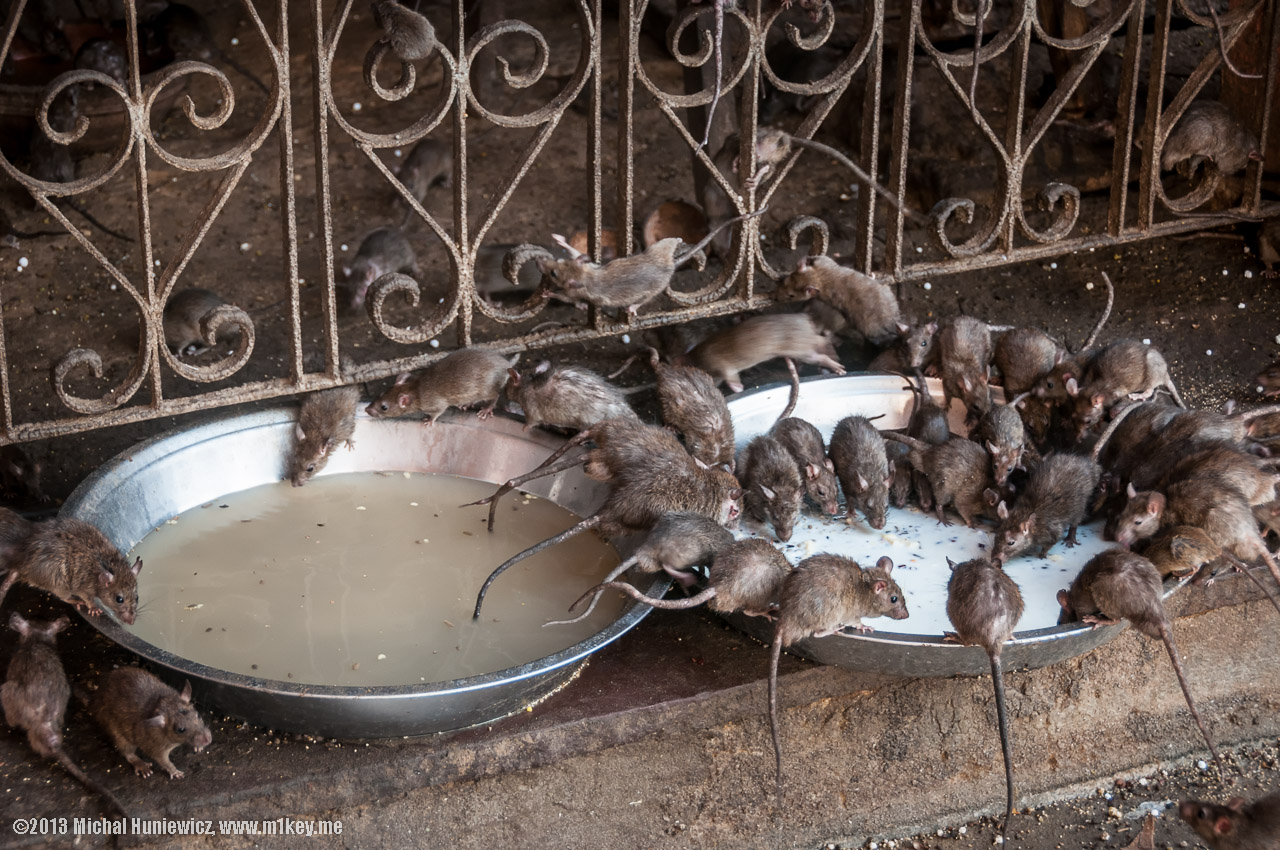
One more picture from the Rat Temple that I have already introduced in my Highlights from India gallery.
ISO 250, 55mm, f/4.8, 1/80s.
Barefoot in the Rat Temple
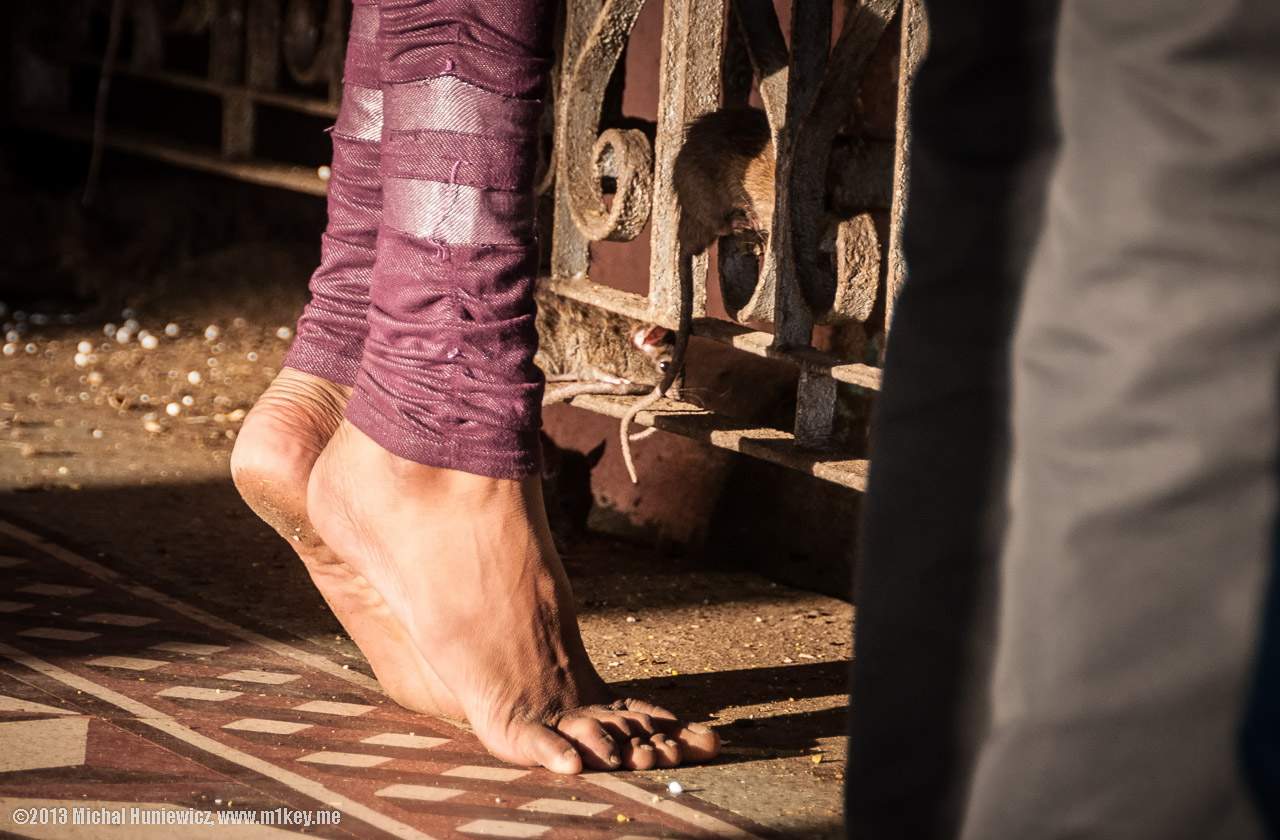
Well, I was at least wearing socks. The rats come and try to nibble on your feet. Everyone is trying to spot the albino rats.
ISO 200, 130mm, f/5.6, 1/125s.
Domes
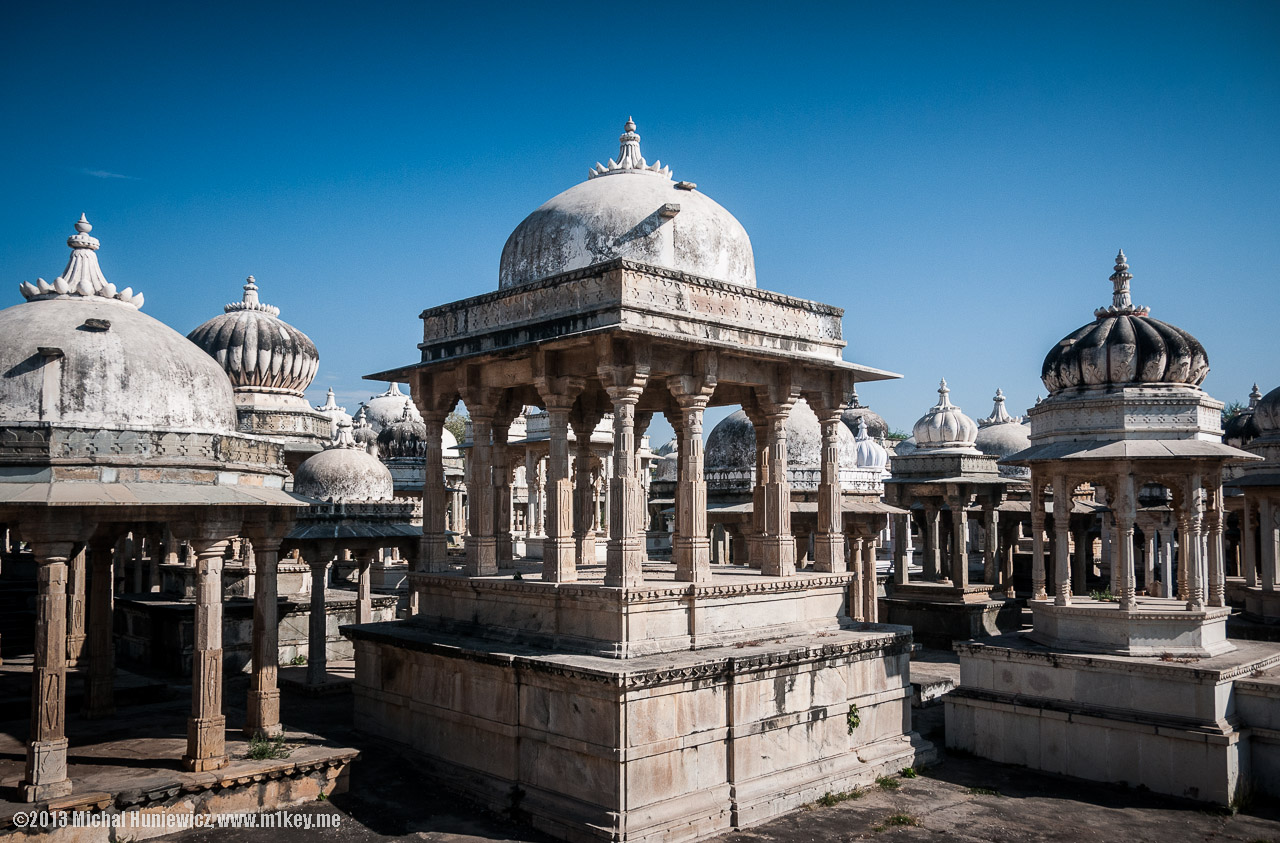
The Ahar Cenotaphs in Udaipur. Can you take pictures there, I hear you ask?
ISO 200, 18mm, f/4.5, 1/1000s.
No photo
Inside a cenotaph
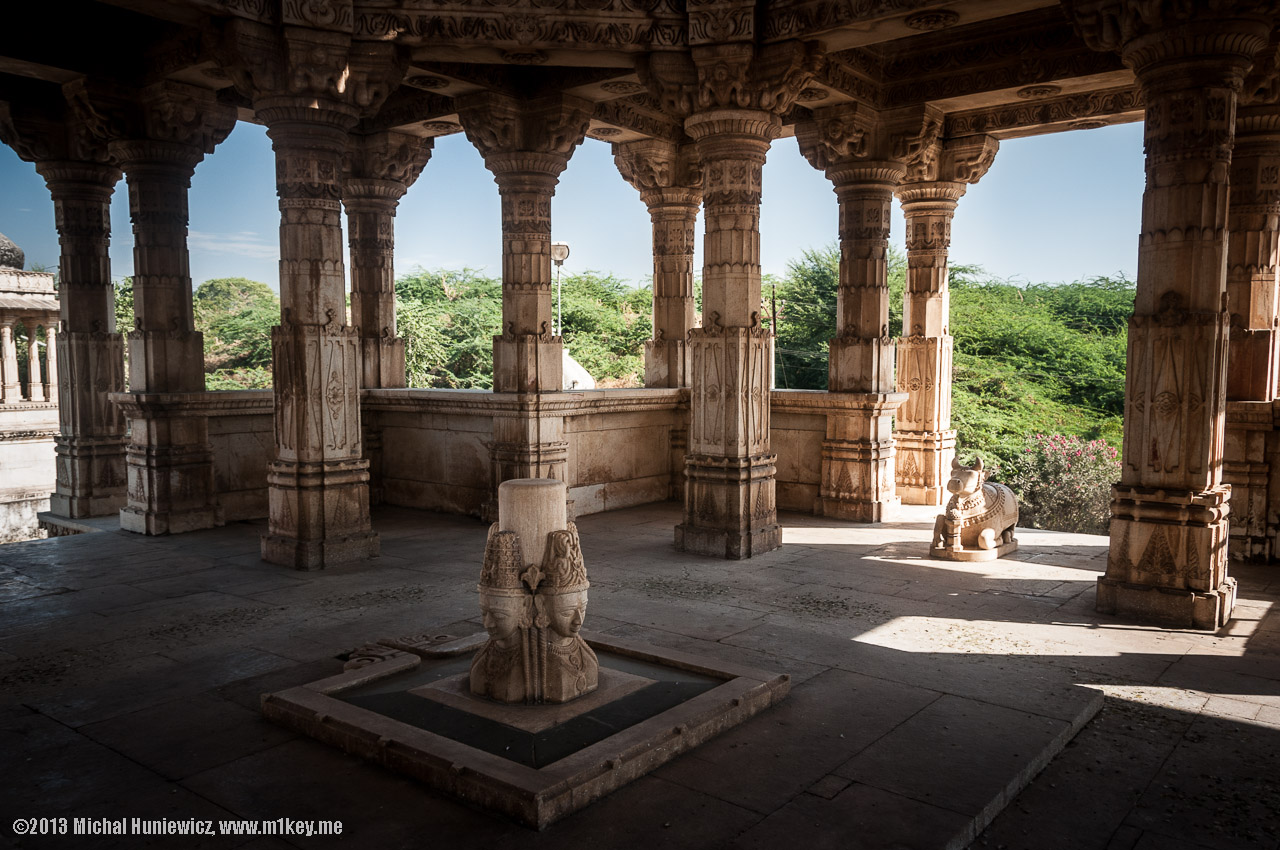
The site contains more than 250 cenotaphs, and they were built over 350 years. [3]
ISO 200, 18mm, f/5.0, 1/160s.
The greatest and the best temple in the world
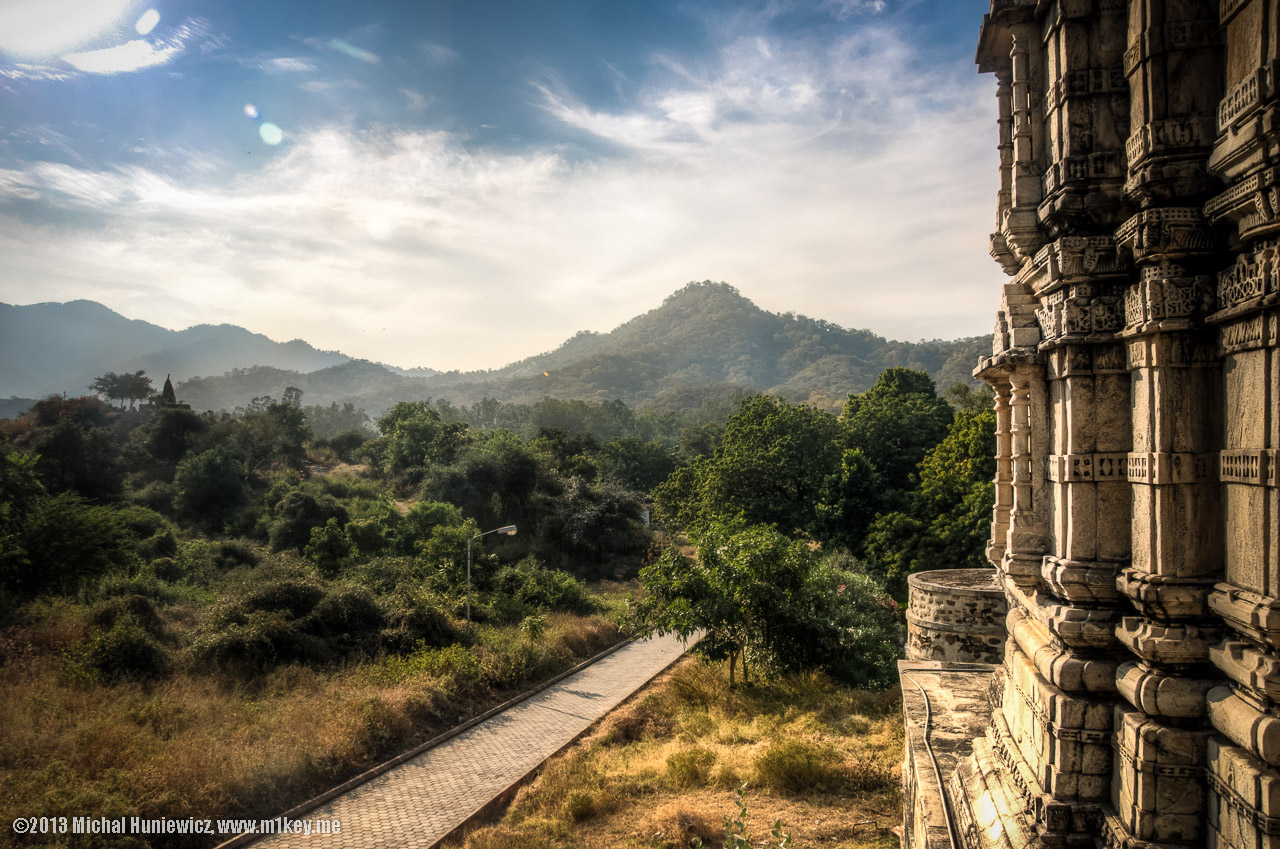
And this is what I thought to be the best temple I had ever seen, and I still do.
ISO 200, 18mm, f/10.0, 1/250s.
Inside the temple
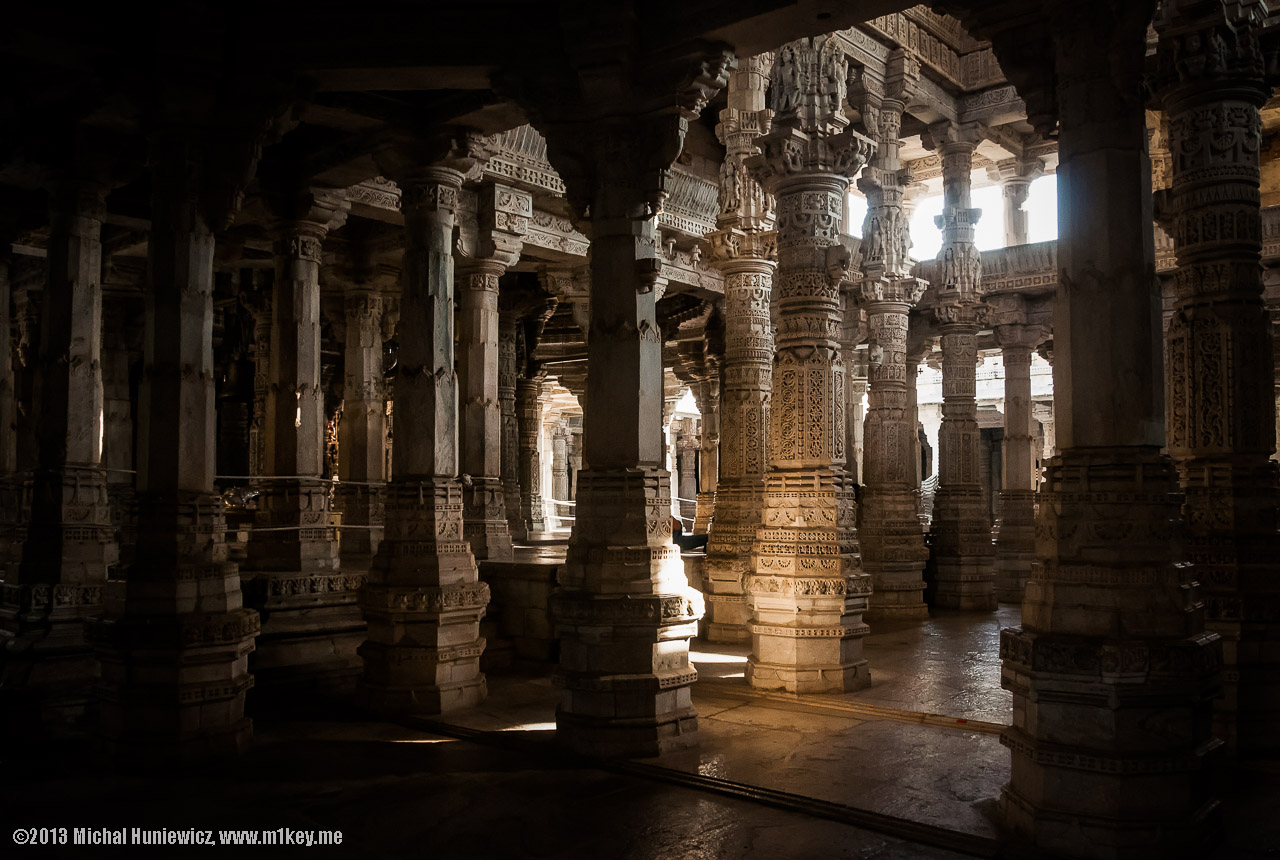
It's a 15th century Jain temple in the village of Ranakpur. The temple has four faces, and that symbolises the cosmos - Jains believe
that the universe is eternal, nothing is ever created or destroyed. There are three realms: the heavens, the earthly realms,
and the hells. [15]
ISO 720, 18mm, f/5.6, 1/100s.
Decorations
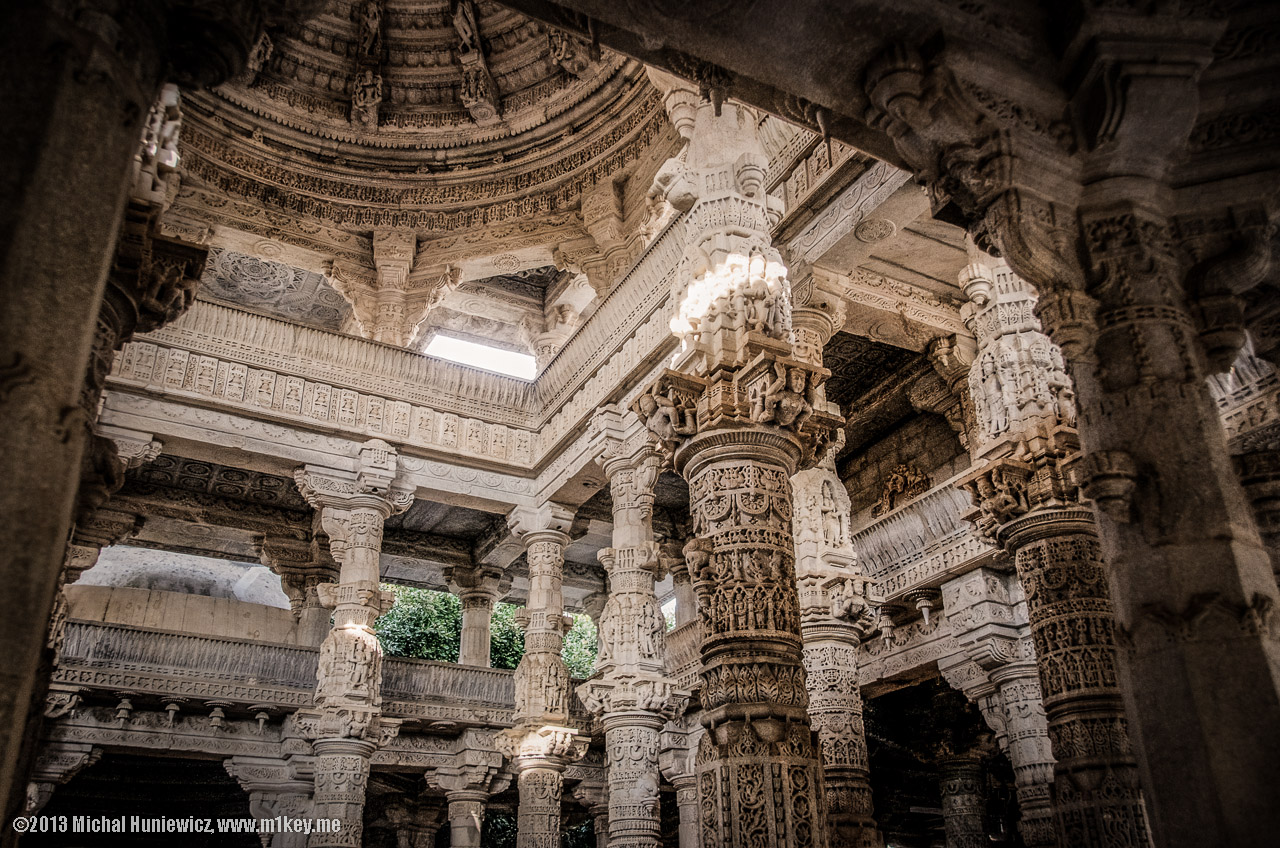
The temple is roughly 60 by 62m in size, and is supported by over 1444 pillars, and all of them are uniquely carved [7].
ISO 400, 20mm, f/3.5, 1/100s.
Turrets
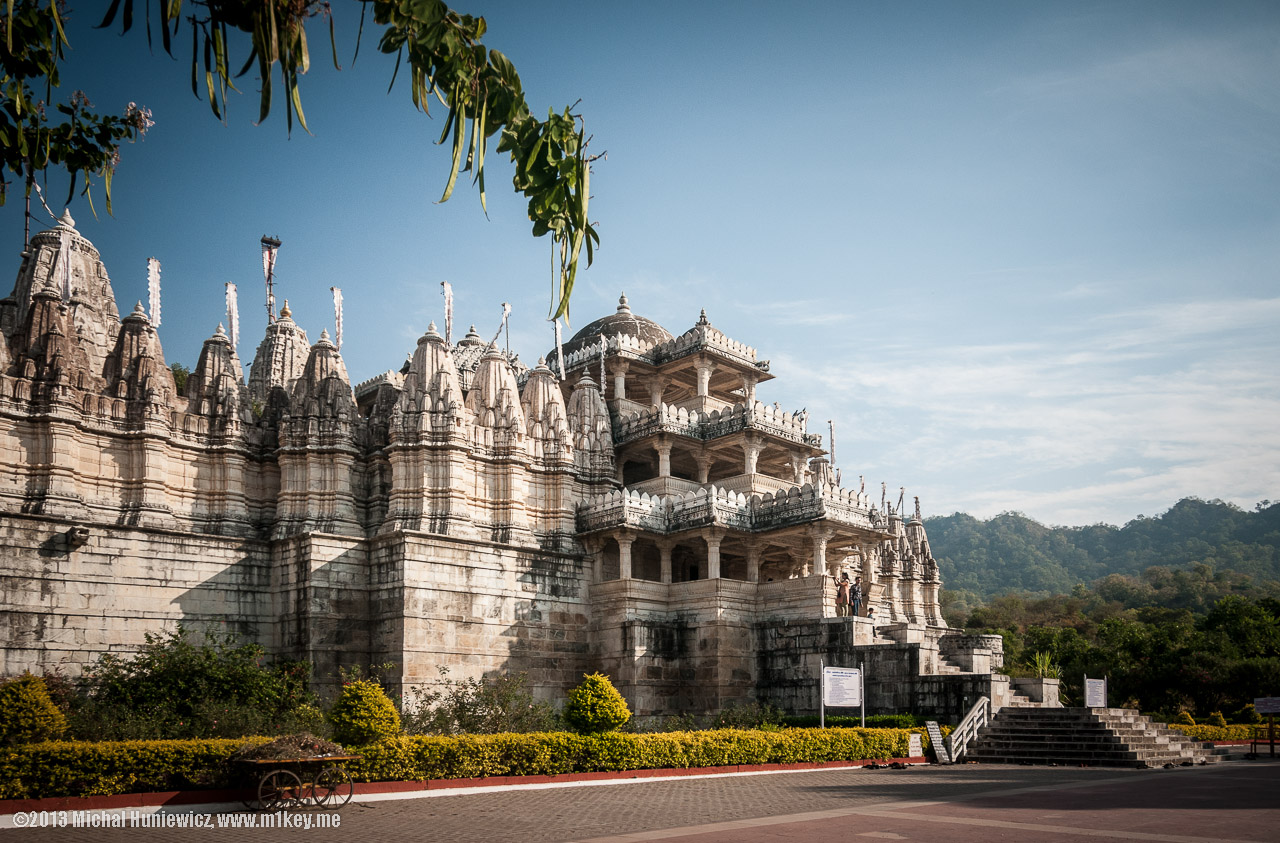
Jainism is the first known attempt to create a single doctrine from the rich Indian traditions. [18, ch. 1].
There aren't so many sources on it available, and many of my questions on Jainism have remained unanswered. [19]
In the picture, temple turrets and a cupola above the entrance.
In the picture, temple turrets and a cupola above the entrance.
ISO 200, 18mm, f/4.0, 1/800s.
Head to toe
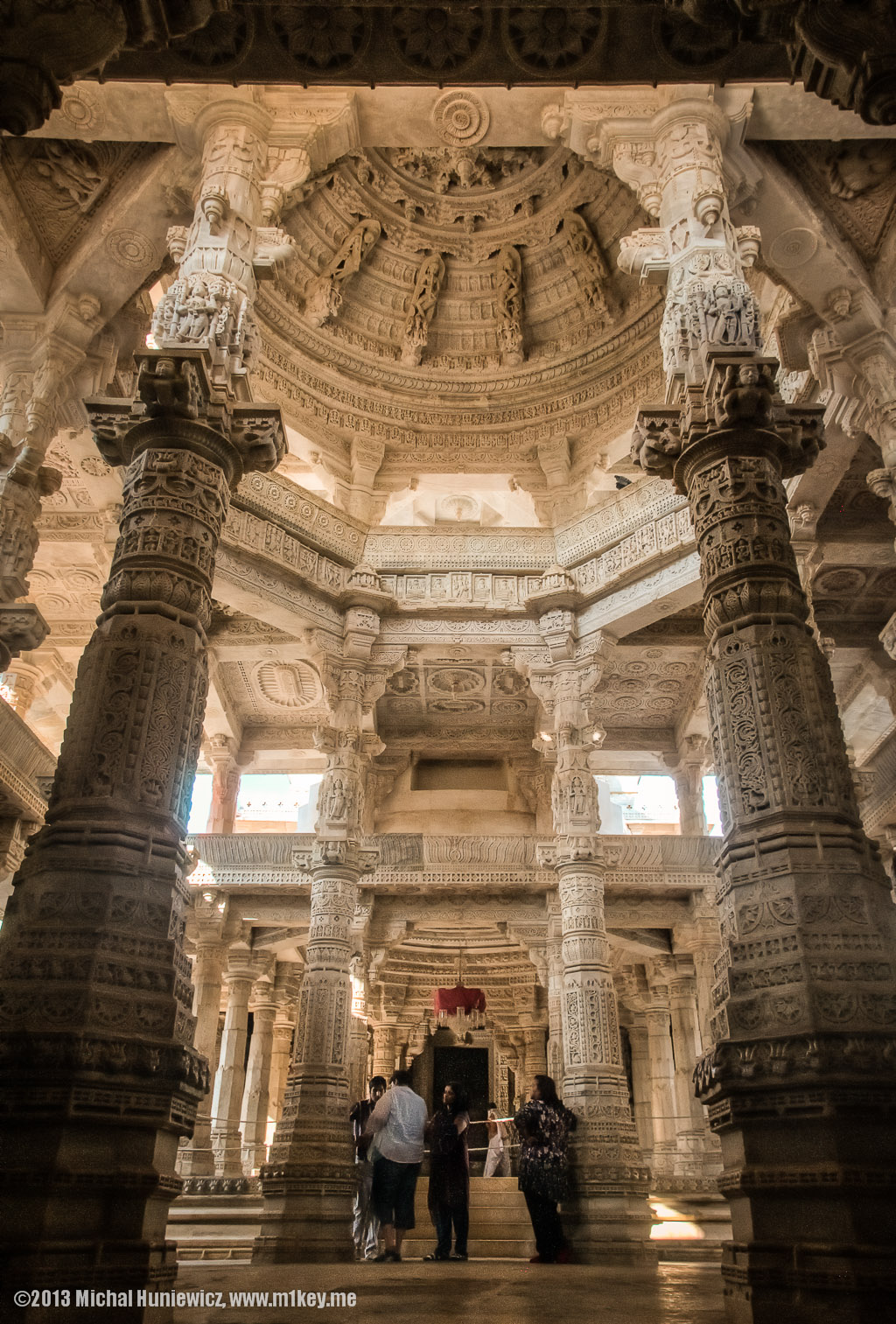
Jainism is primarily a religion of non-violence. While it recognises the right to self-defence, it teaches to avoid causing harm;
if harm must be done, it should be done to a being with fewer senses, and therefore Jains must be vegetarians (it's less harmful to kill a plant
than to kill an animal). Some even use a broom
stick to remove insects from their path (my dad told me about it when I was a kid, so that didn't surprise me much)
not to tread on them, and have a piece of cloth on their mouths not to swallow any living creatures (that, I must say, surprised me).
ISO 1250, 18mm, f/8.0, 1/100s.
Lips
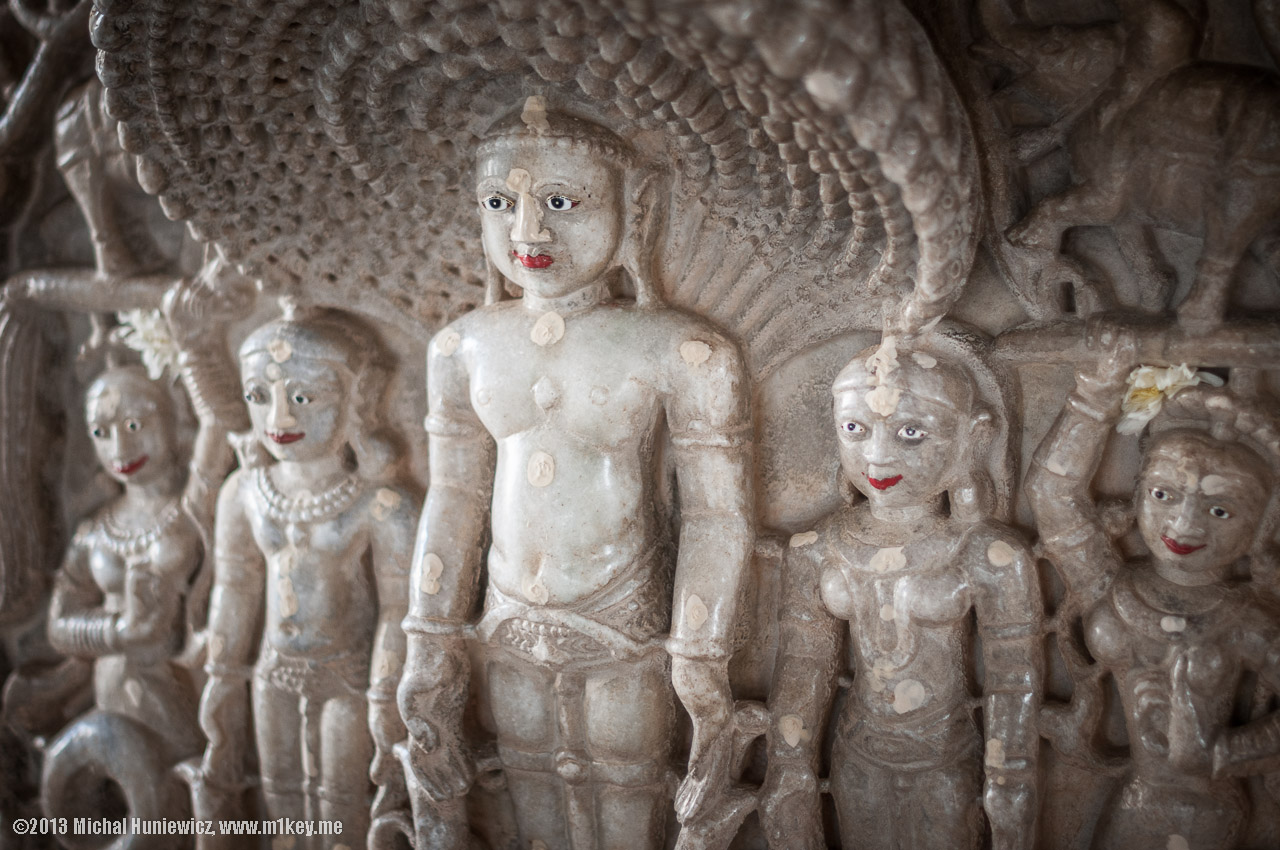
Jainism is divided into two sects: Digambara and Svetambara. Male digambara monks wear no clothes, and only have two possessions:
a peacock feather broom and a water gourd [10]; they believe women cannot achieve liberation without being reborn as a man [9].
Svetambara monks can have a few possessions more: clothing, a begging bowl, a brush to remove insects from their path, books and writing materials; they
also believe women can achieve liberation.
The two sects also disagree on which books constitute the scripture.
In terms of temples, the difference between them is that Svetambara Jains decorate the images with paint and ornaments [8]; while Digambara Jains don't, and their statues have down-cast eyes [9].
In terms of temples, the difference between them is that Svetambara Jains decorate the images with paint and ornaments [8]; while Digambara Jains don't, and their statues have down-cast eyes [9].
ISO 200, 50mm, f/1.4, 1/200s.
Columns
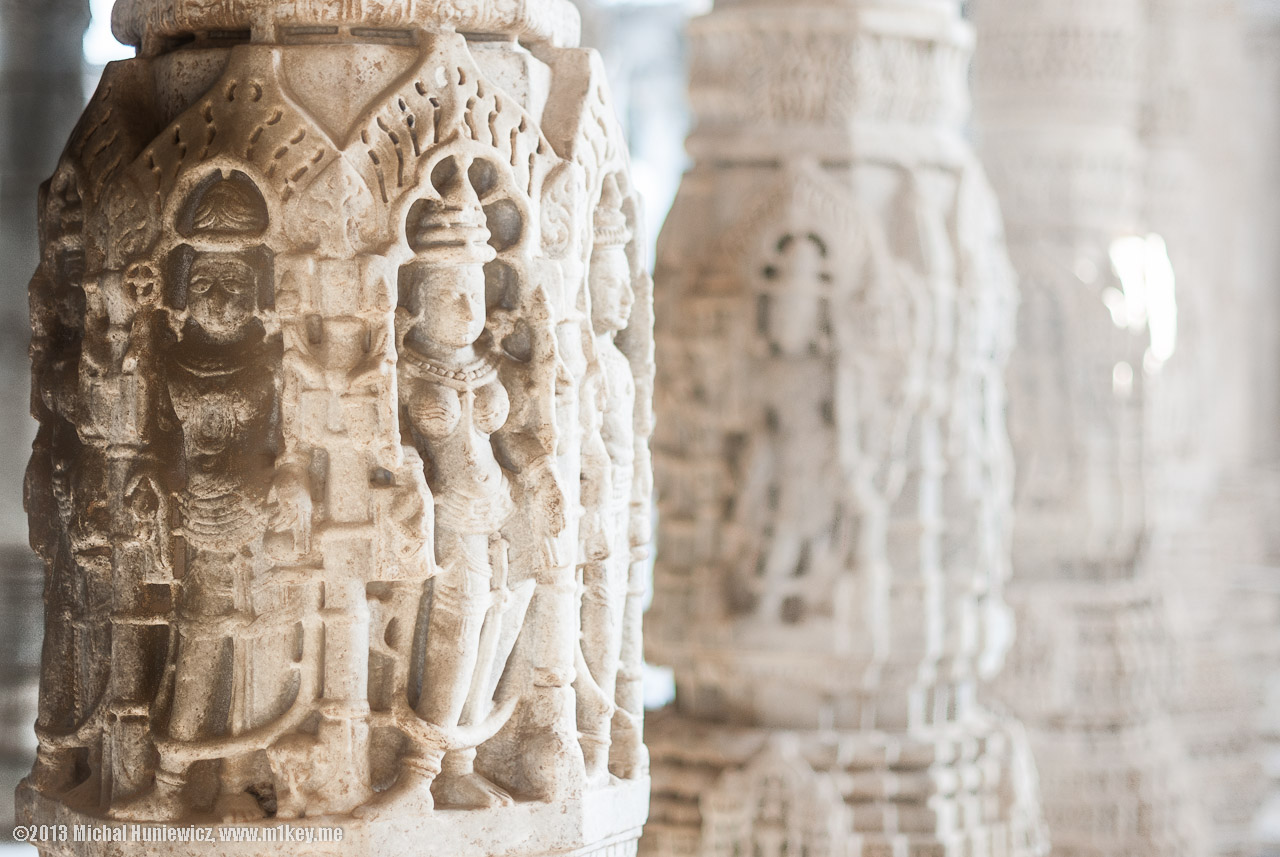
There is no above-all god in Jainism, and there is no creator deity. There are "gods", but anyone can become one if they achieve liberation (moksa). [11]
One deity is Ambika, the Mother Goddess of Jainism, the patron deity of material prosperity, childbirth, and protection of women. [15]
One deity is Ambika, the Mother Goddess of Jainism, the patron deity of material prosperity, childbirth, and protection of women. [15]
ISO 200, 50mm, f/1.4, 1/250s.
Elephant
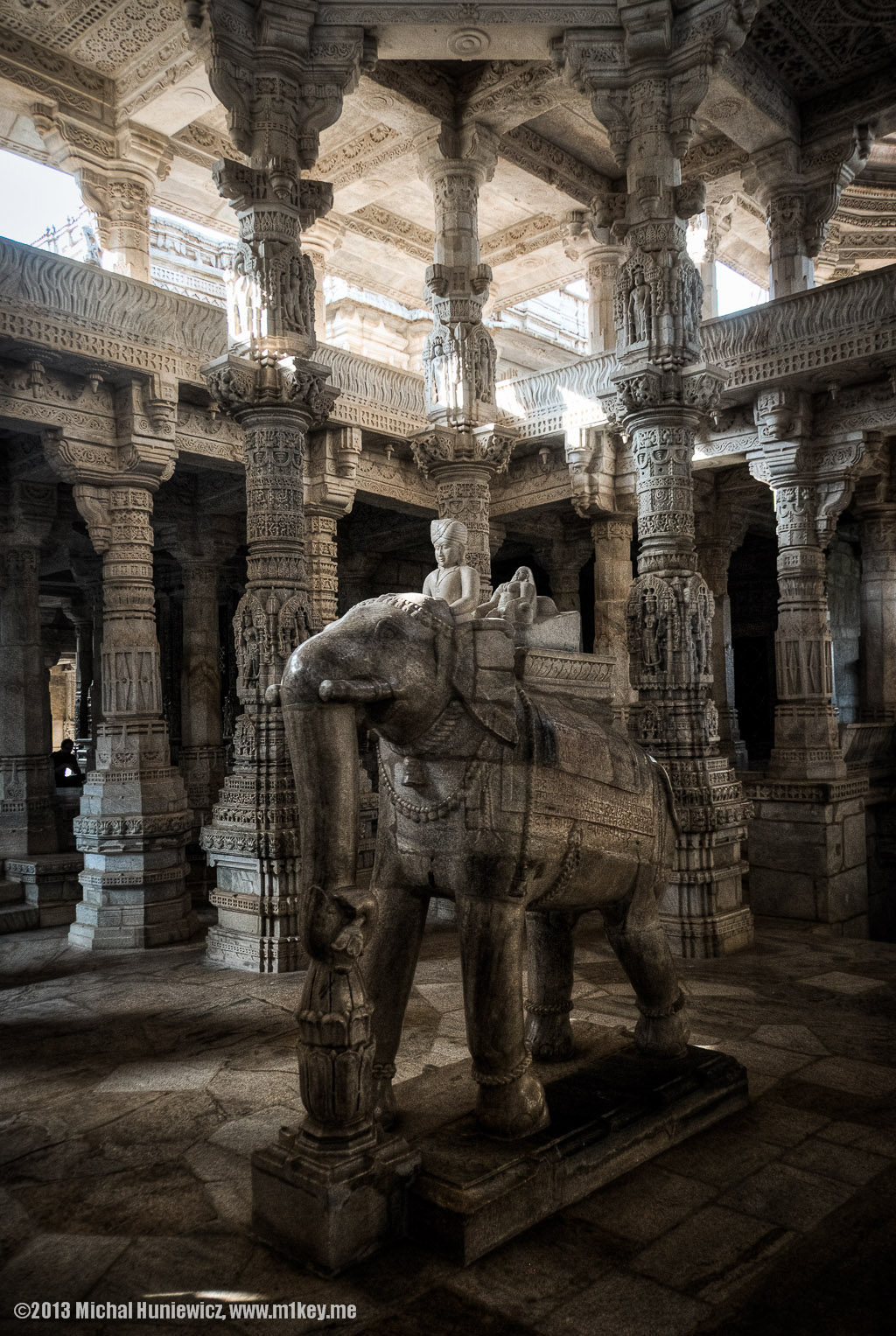
Jainism was created centuries BCE as an egalitarian answer to Hinduism and its castes. Together with Buddhism, these 3 religions
share some concepts, and one of them is karma, althought they define it a bit differently.
In Jainism, good deeds give you good karma, and bad deeds give you bad karma. However, here's the catch: all karma is polluting, and prevents you from achieving liberation. [12] To achieve it, you have to say goodbye to worldly pleasures, and become a Jain monk. But not necessarily in this life.
In Jainism, good deeds give you good karma, and bad deeds give you bad karma. However, here's the catch: all karma is polluting, and prevents you from achieving liberation. [12] To achieve it, you have to say goodbye to worldly pleasures, and become a Jain monk. But not necessarily in this life.
ISO 640, 18mm, f/3.5, 1/100s.
Tree
Shikhara

The shikhara of the temple (shikhara is the rising tower in the Hindu temple architecture of North India). [13]
ISO 200, 50mm, f/1.4, 1/800s.
Decorations
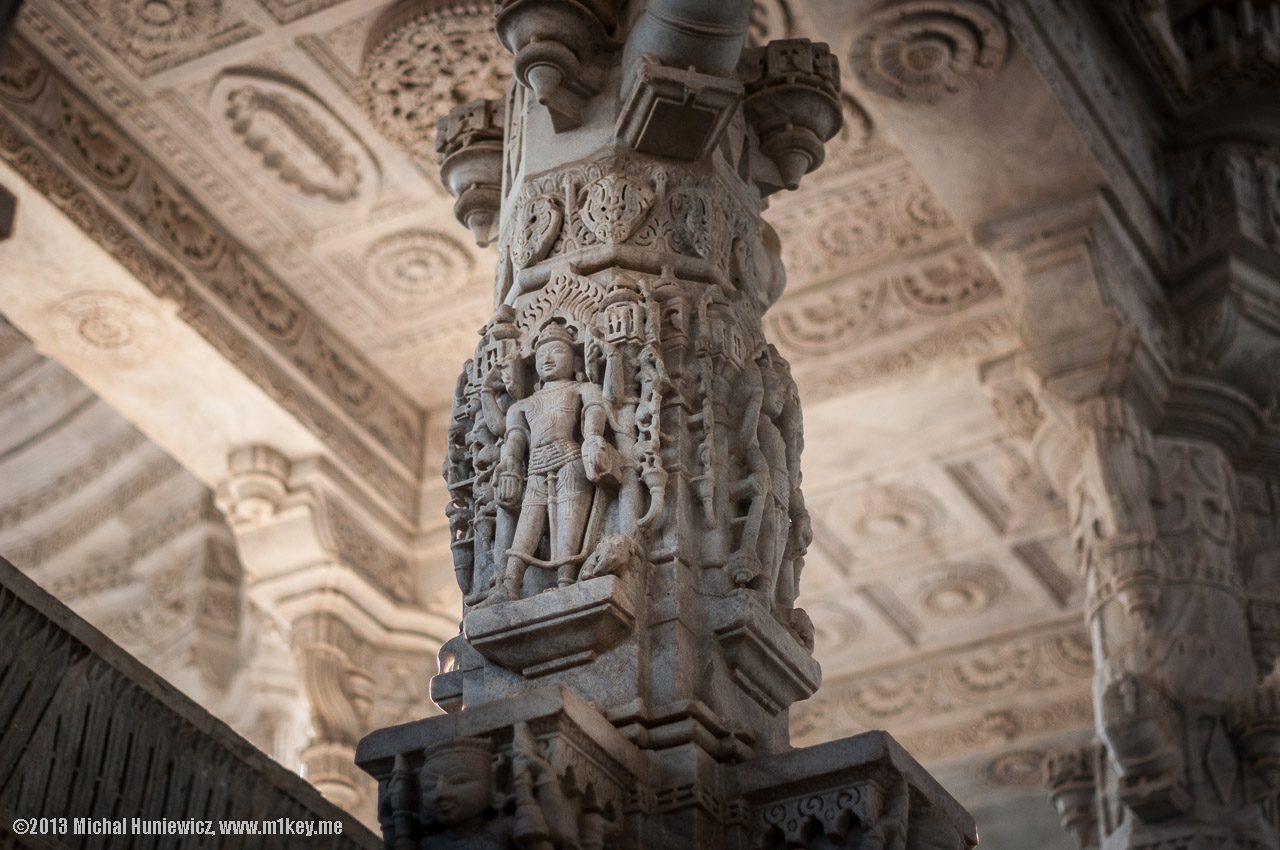
Every spot of the temple has been intricately decorated. What you see carved is animals, demi-gods,
holy writings, and enactment of stories. [15]
ISO 200, 50mm, f/1.4, 1/2000s.
Vault ceiling
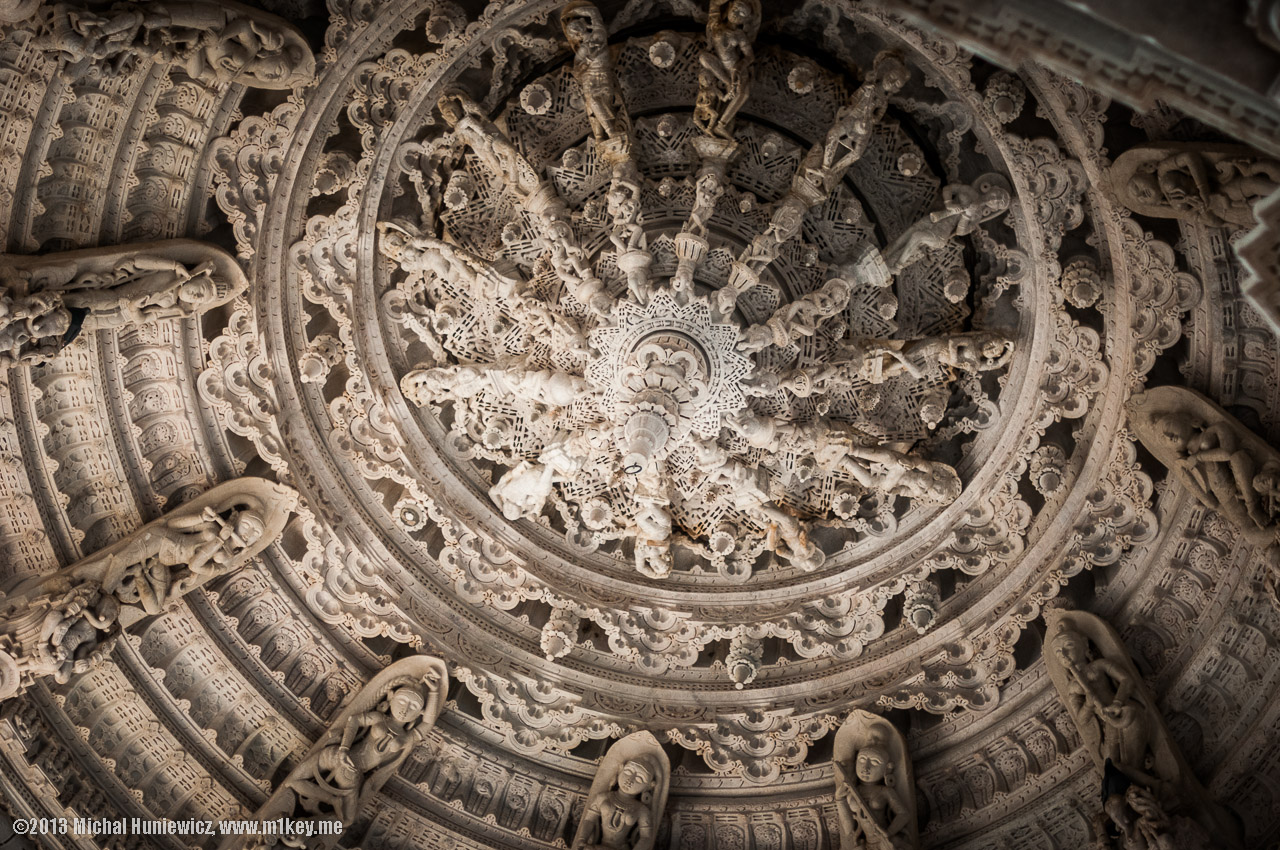
Your karma determines how you will be reborn, whether your next life will be good or bad. You could also go to hell,
and there are eights hells in Jainism; but you will not remain there forever. After the punishment one is reborn in another form. The hells
actually get colder as they go down, not more hot, as one might expect. [15]
ISO 200, 50mm, f/1.4, 1/6400s.
Adinatha

The temple is dedicated to Rishabha, given the title of Adinatha (the first protector). [7, 14] He lived around 7190 BCE,
and is referred to as the founder of Jainism, but there is no historical evidence of that, according to the Indologist
Dr. Herman Jacobi. [14]
Rishabha is one of the Tīrthaṅkara, that is a human being who helps in achieving liberation and enlightenment. Every Jain temple is dedicated to at least one deity or Tīrthaṅkara. [15] The most popular (and last) Tīrthaṅkara is Mahāvīra, the most widely worshipped propagator of Jainism. [20]
Rishabha is one of the Tīrthaṅkara, that is a human being who helps in achieving liberation and enlightenment. Every Jain temple is dedicated to at least one deity or Tīrthaṅkara. [15] The most popular (and last) Tīrthaṅkara is Mahāvīra, the most widely worshipped propagator of Jainism. [20]
ISO 280, 50mm, f/1.4, 1/100s.
Detail
Visiting a Jain temple
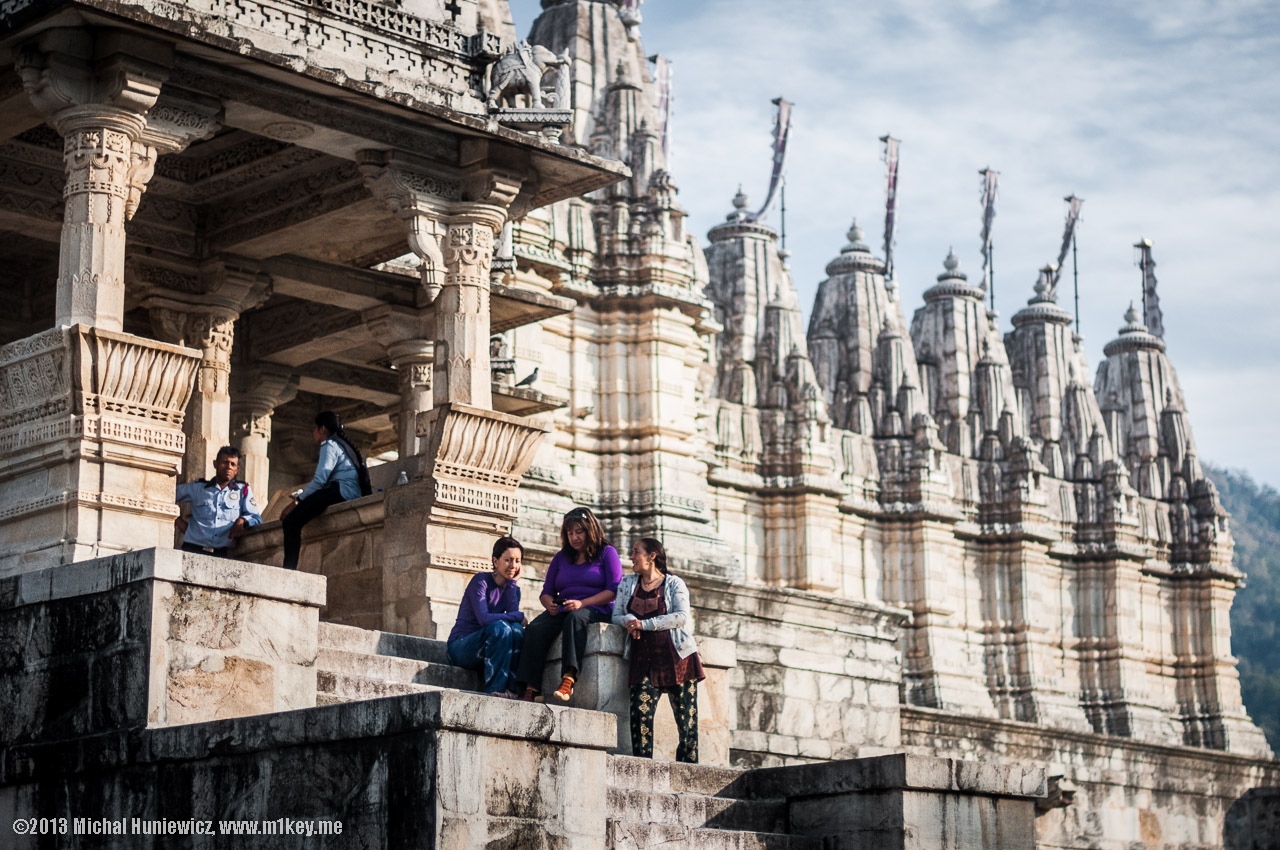
There a certain rules that apply to everyone visiting Jain temples, such as no footwear, no eatables, no chewing, no leather objects, etc.
Of course leather wallets were most welcome! [4]
ISO 200, 50mm, f/1.4, 1/8000s.
Outside
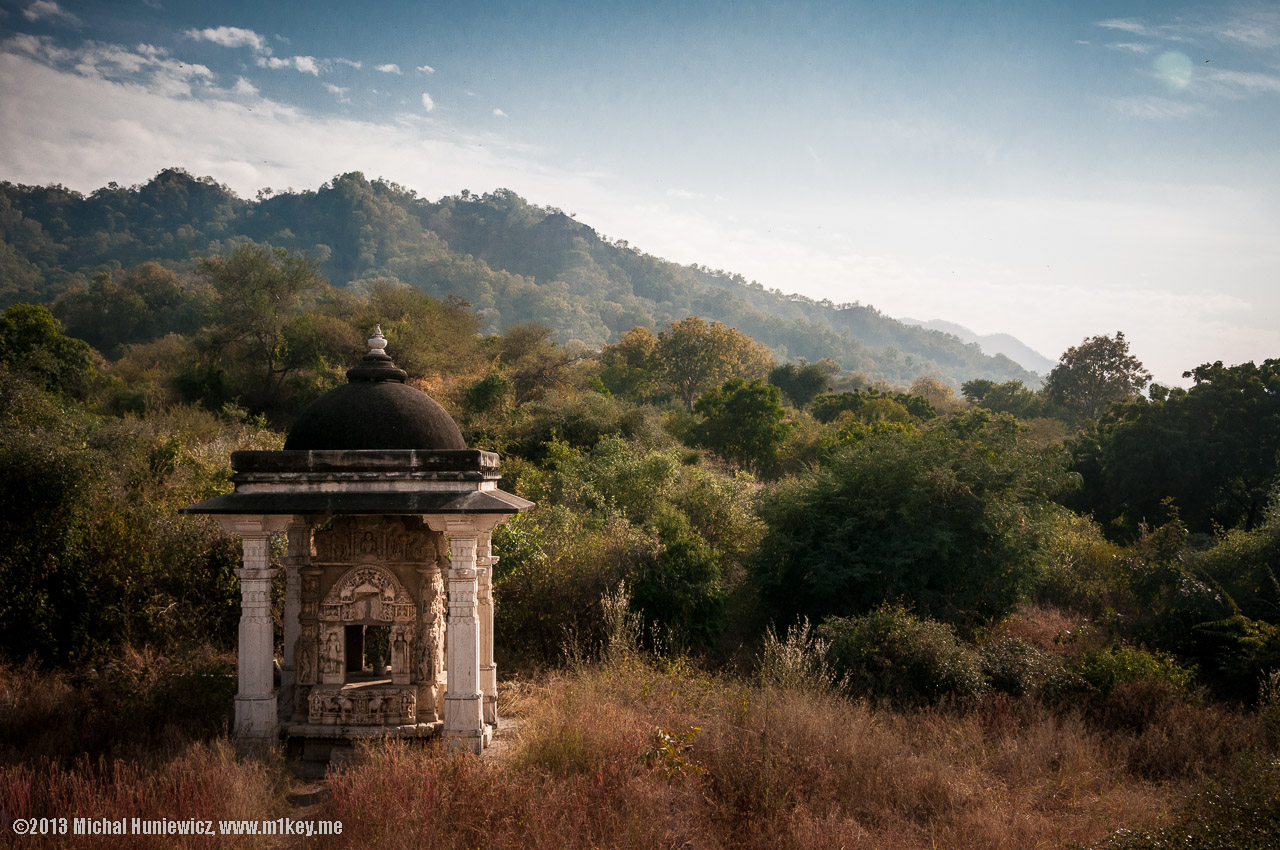
This was such a refreshing view after spending many days in traffic and dust. Around the temple it was finally quiet and peaceful.
ISO 200, 26mm, f/8.0, 1/500s.
Calotes
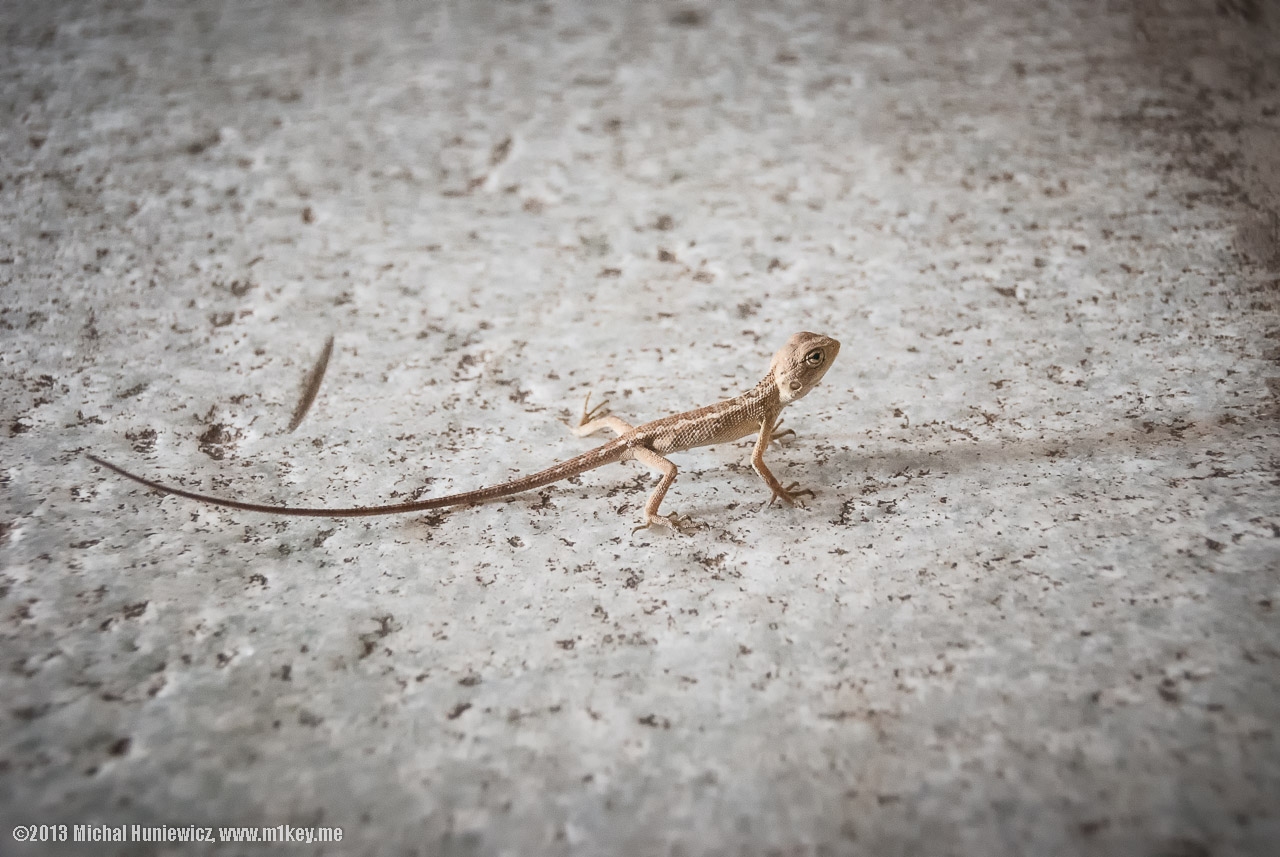
This supposedly is a calotes, or garden lizard, a very young one. [17]
ISO 1600, 44mm, f/5.6, 1/25s.
Untouchable woman
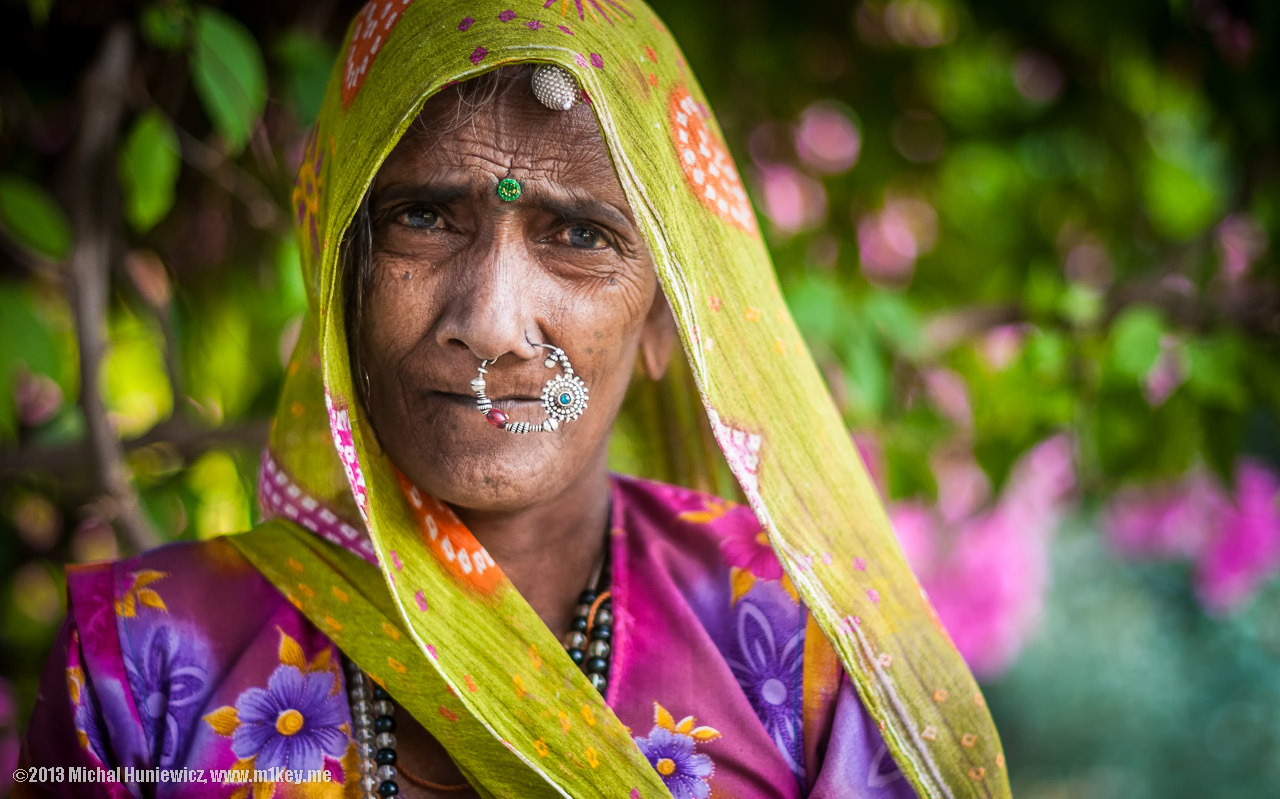
This is a woman from the Untouchable caste, who claimed she was not allowed to enter the temple area.
She wasn't alone - I have already showed you her friend in my Highlights from India gallery.
ISO 200, 50mm, f/1.4, 1/400s.
Jain Sun Temple
Cut-off head
Kamasutra
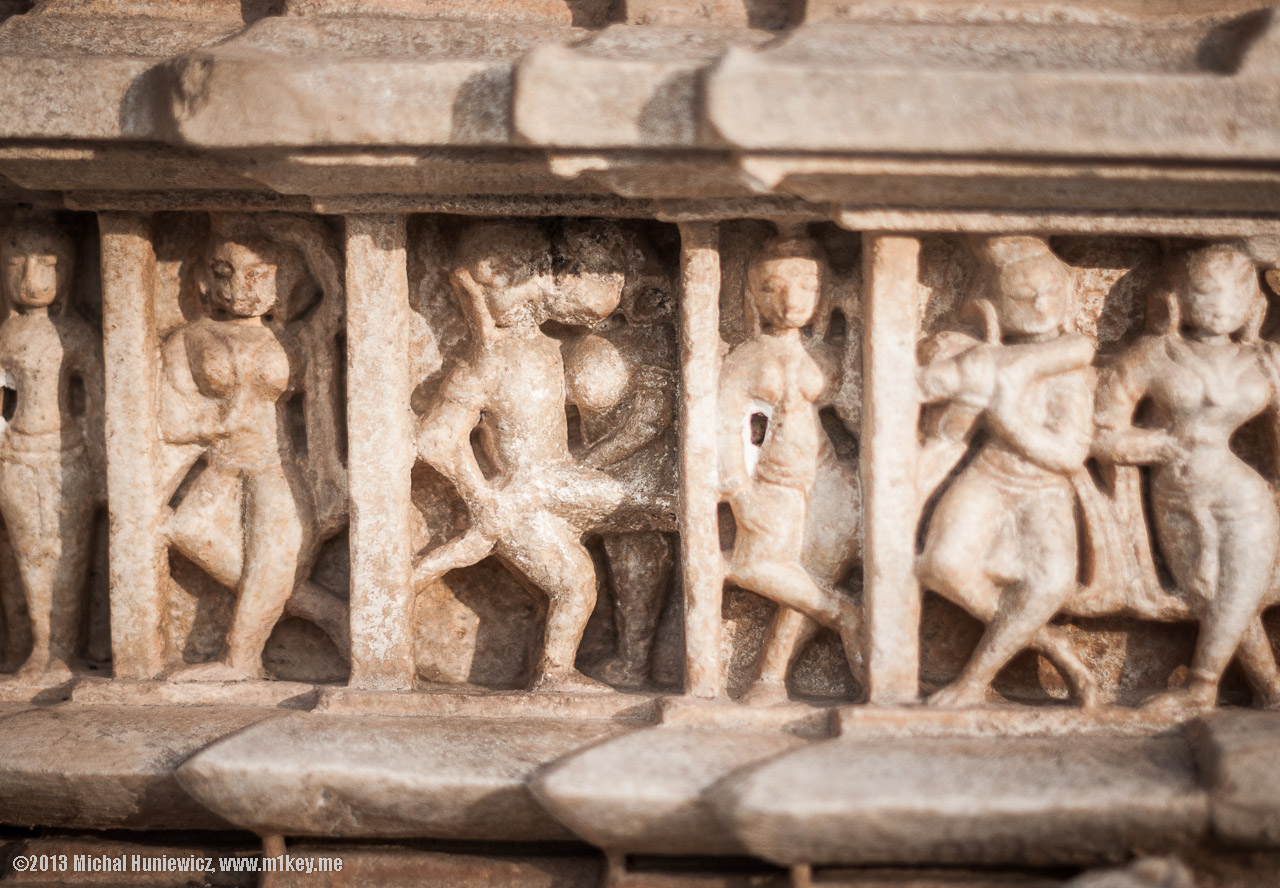
Some people at the site called this little temple a Kamasutra temple, but the carvings were not overly erotic - this is probably the best I could find. The actual
Kamasutra temple is in Khajuraho.
ISO 200, 50mm, f/1.4, 1/5000s.
Dome
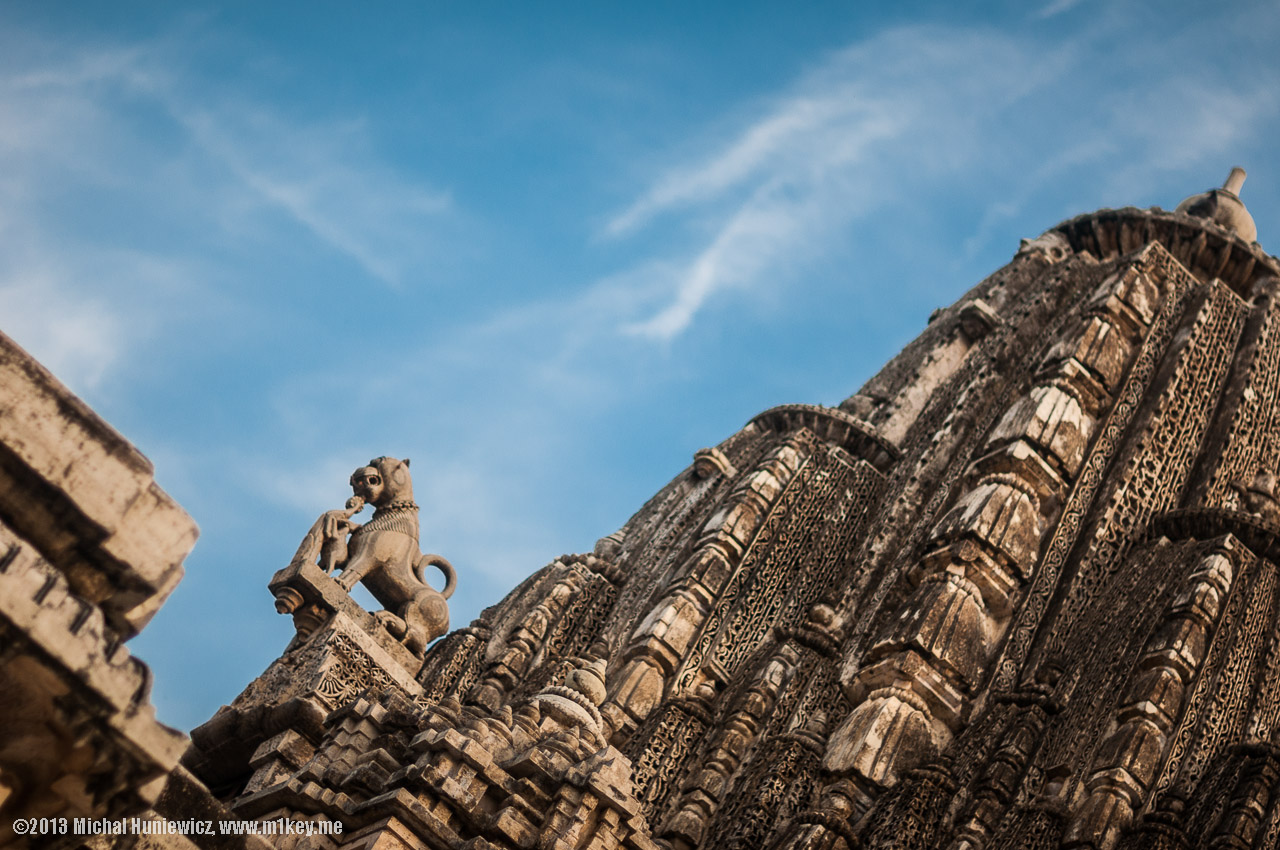
Apparently, Jain temples in North India (like this one) are completely different from the Jain temples in South India (which do not have any domes). [4]
ISO 200, 50mm, f/1.4, 1/4000s.
Labia
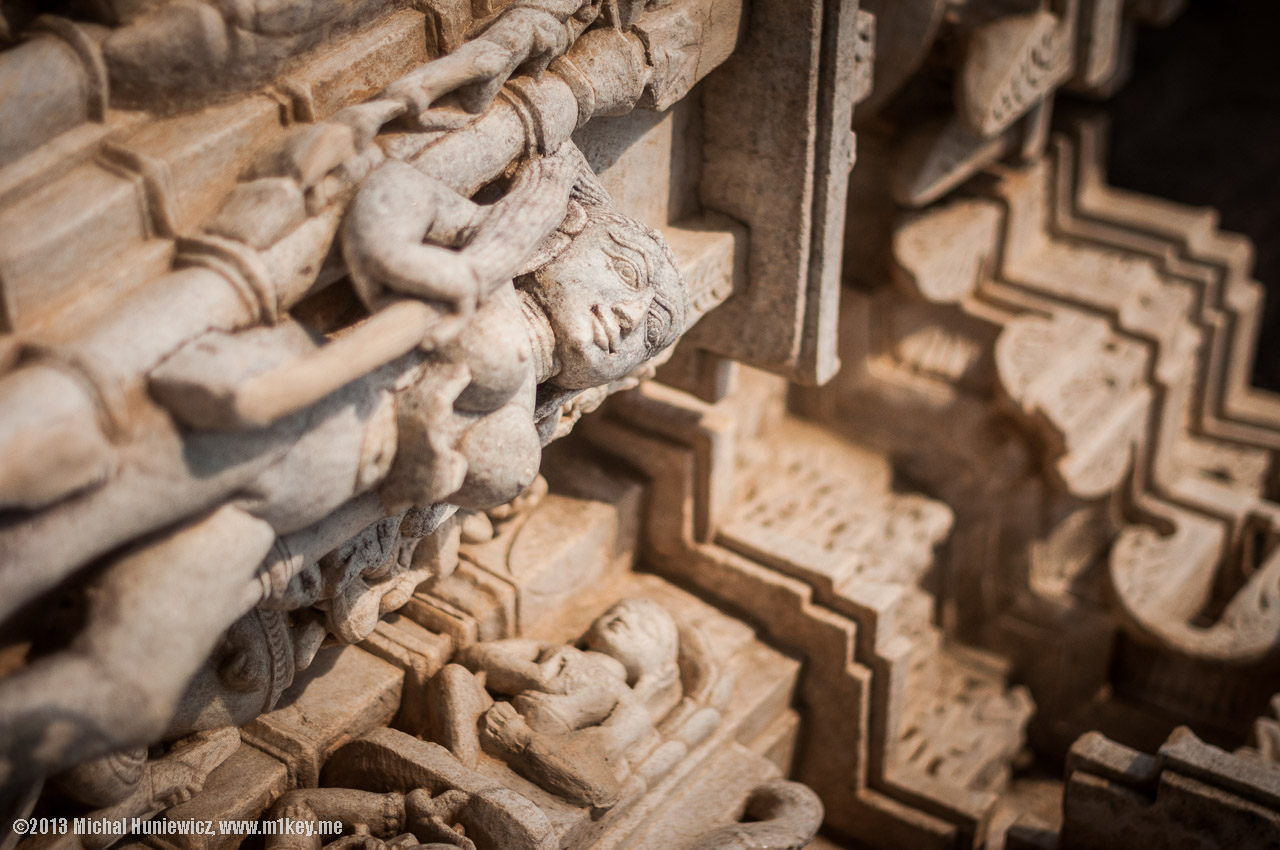
Imagine this stuff in a Catholic church... Even though Jesus was supposedly crucified naked - the Linz museum
holds a crucifix with naked Jesus [5, Wojciech Kuczok], but the motive didn't really catch up for some reason.
ISO 200, 50mm, f/1.4, 1/8000s.
Earrings
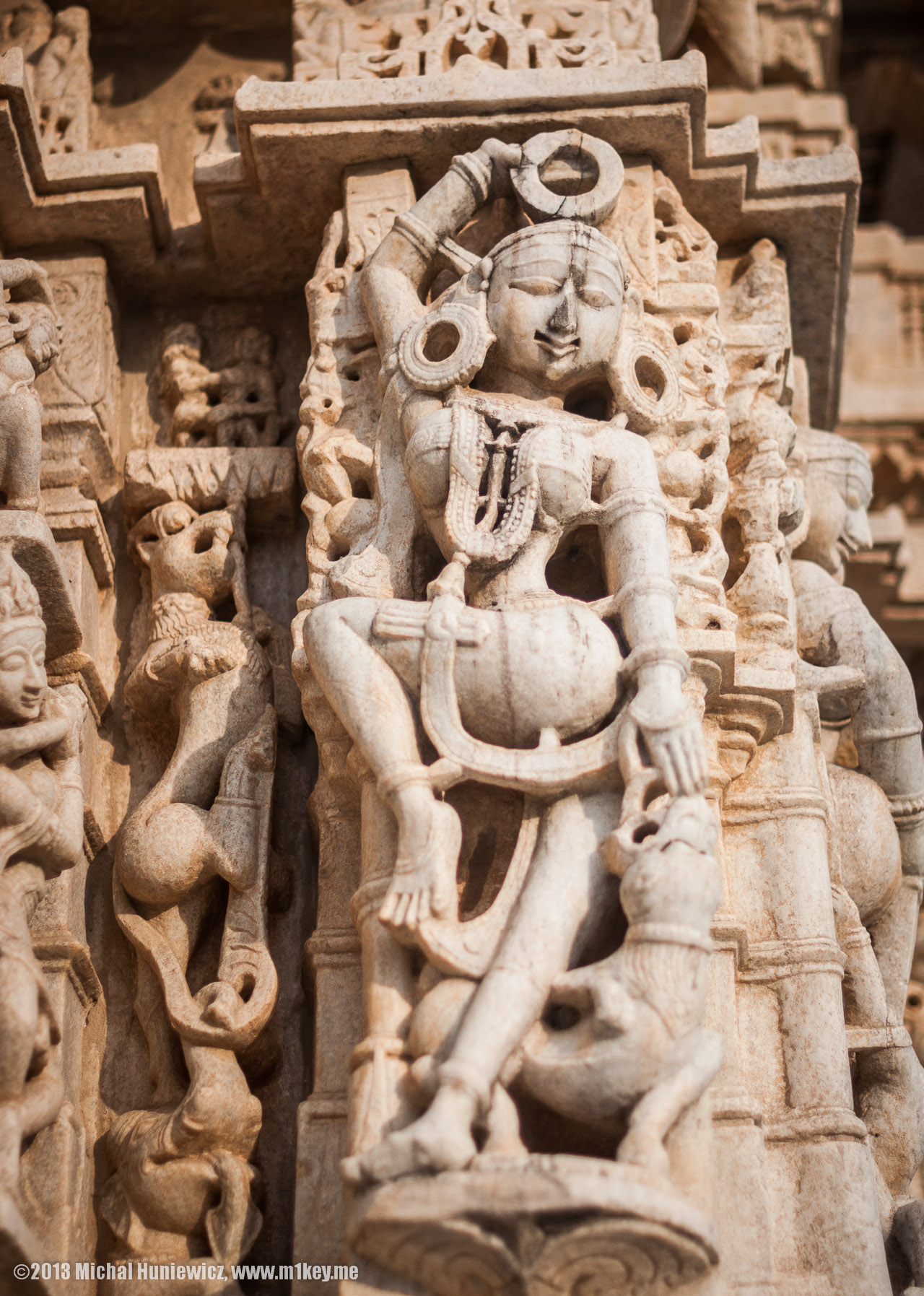
Finally, a lady with nice curves and nice earrings, and what reminds of a ring flash above her head.
ISO 200, 50mm, f/1.4, 1/6400s.
